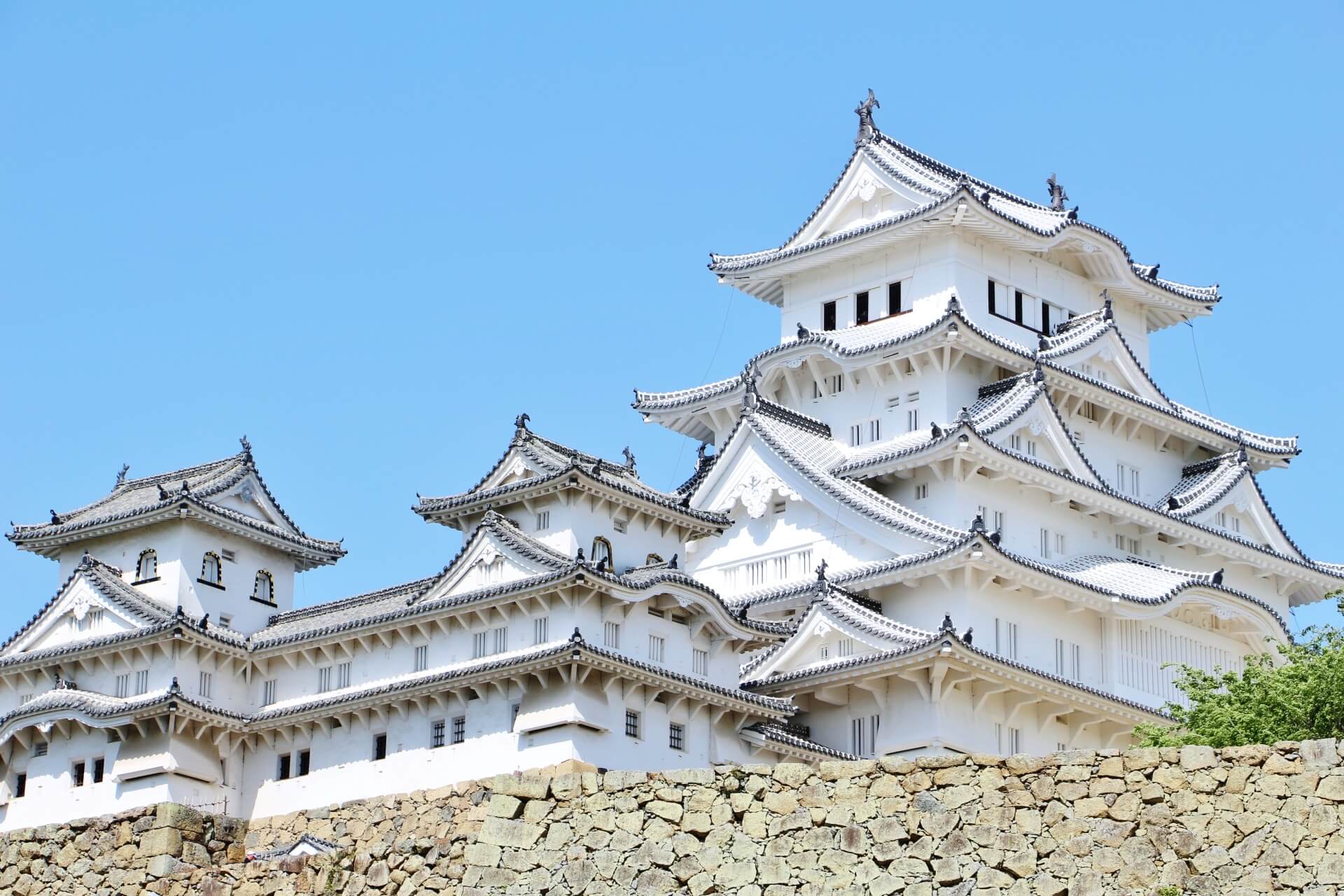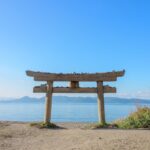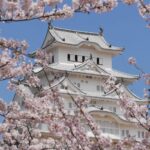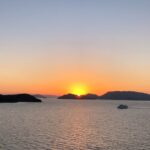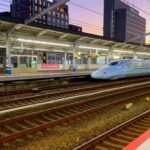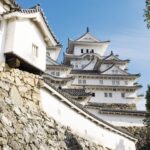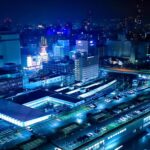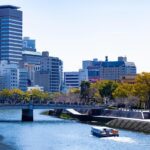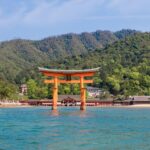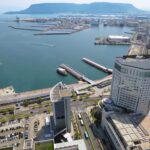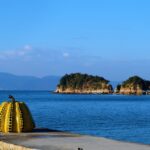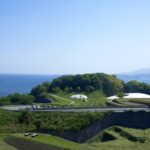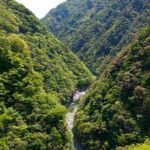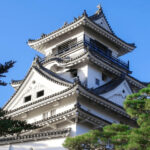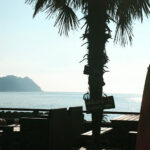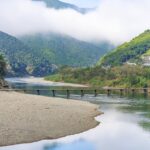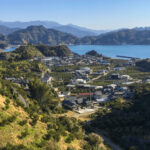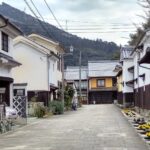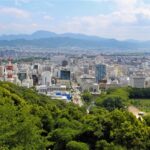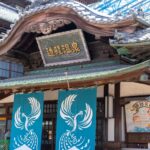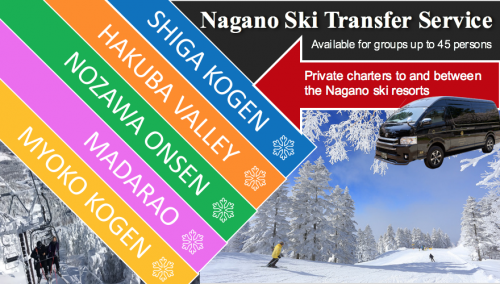15 Things to Do Around Hiroshima & Where to Stay
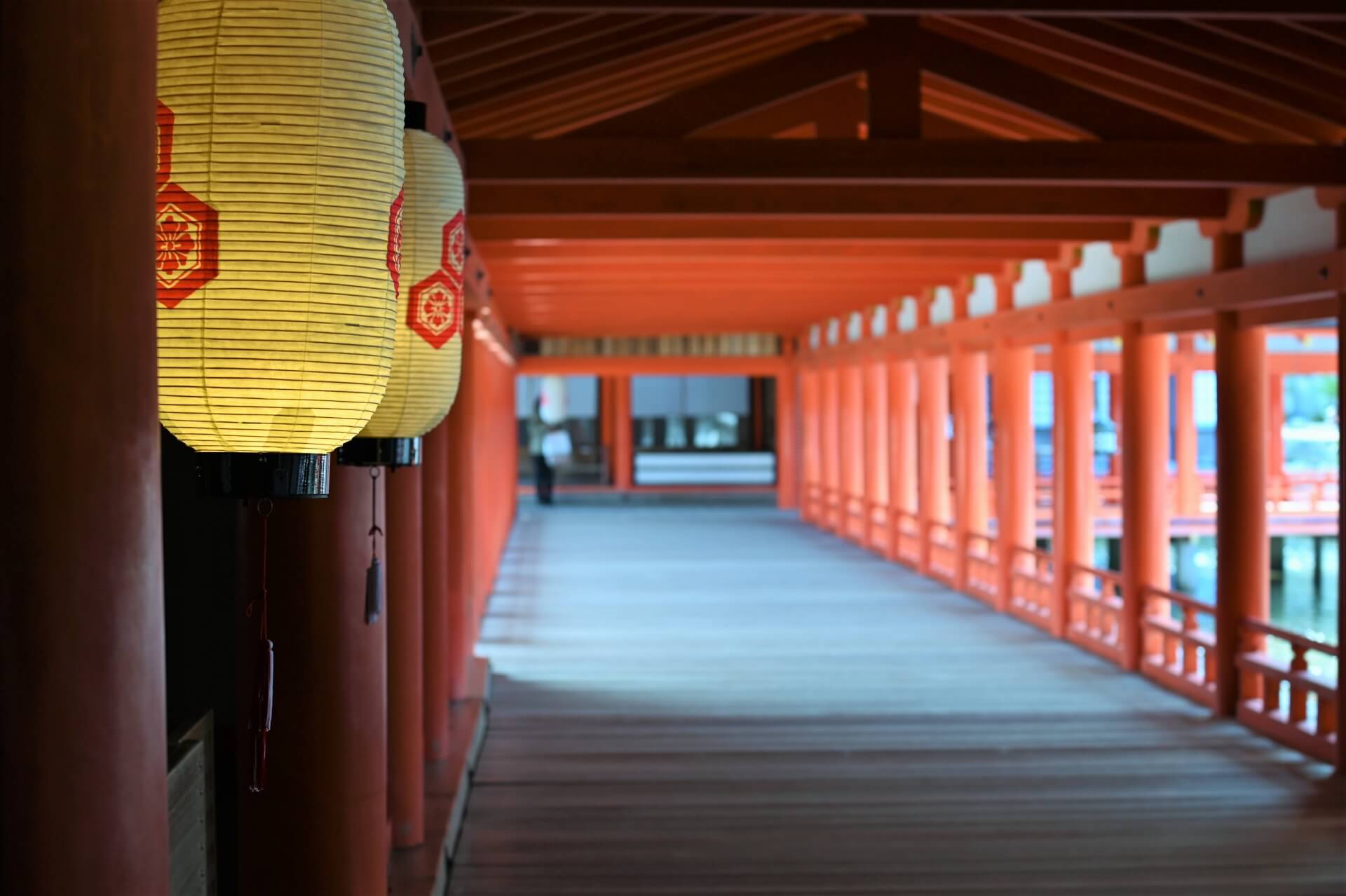
Hiroshima occupies a hugely important place in modern history while also being one of Japan’s most liveable cities and access point to the always popular island of Miyajima and expansive region of the Seto Inland Sea. On this page you will find the following information:
— 15 Things to Do In & Around Hiroshima
— Best Areas to Say When Visiting Hiroshima
On August 6th 1945, the first atomic bomb was dropped on Hiroshima. Followed three days by the bomb dropped on Nagasaki, the use of nuclear weapons on these two cities brought the Second World War to a close while heralding a new, potentially apocalyptic reality for all people. The total number of dead in Hiroshima is unknown, however by December 1945 – some five months after the bomb fell – it is estimated that around 140,000 people had died in Hiroshima from the bombing and its aftermath (and notably more since that time). It is tragic heritage that cannot be told through statistics and facts, and a history that transcends Japan and belongs to us all – making the journey to Hiroshima along with Nagasaki, harrowing yet essential for many visitors.
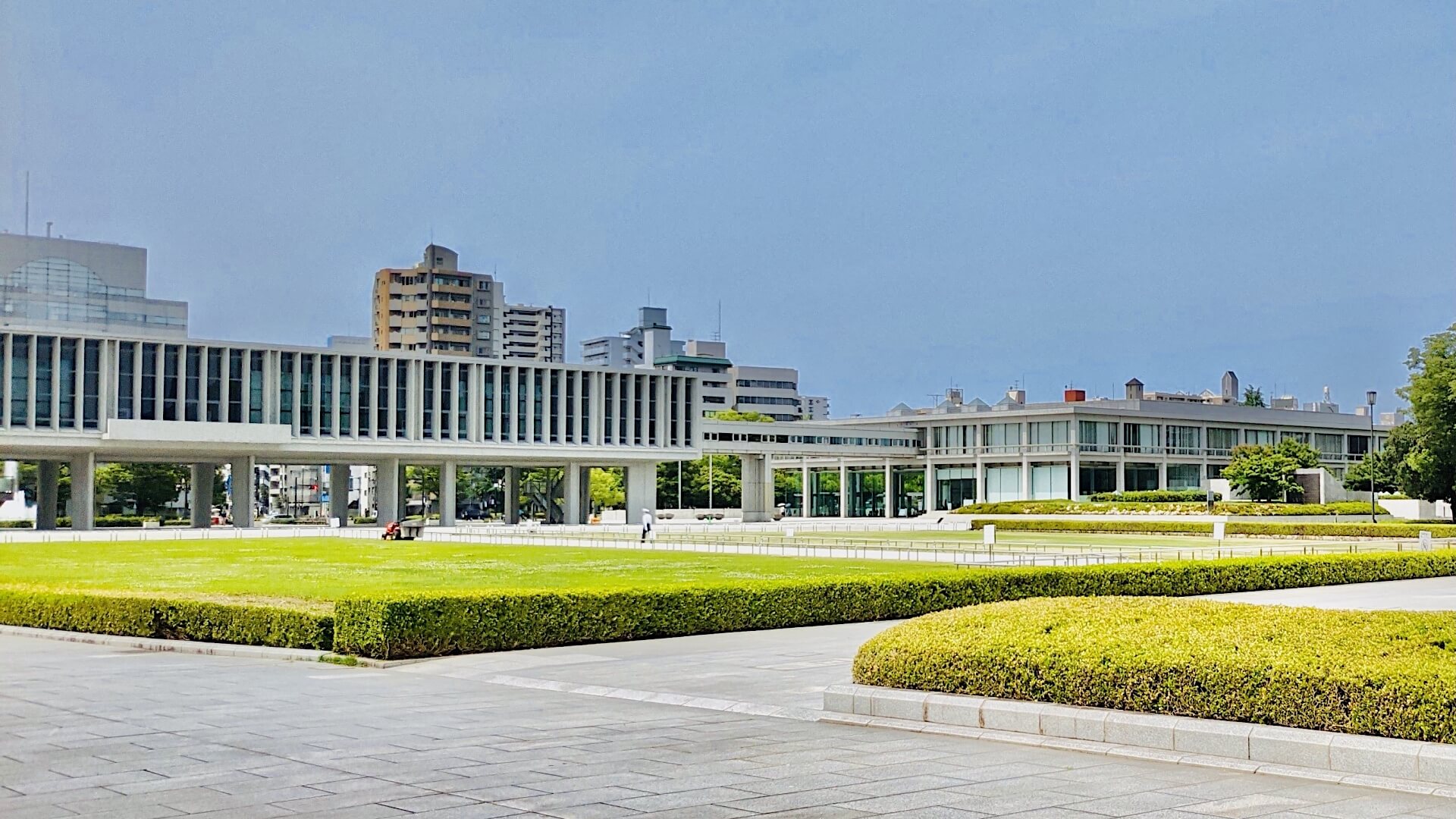
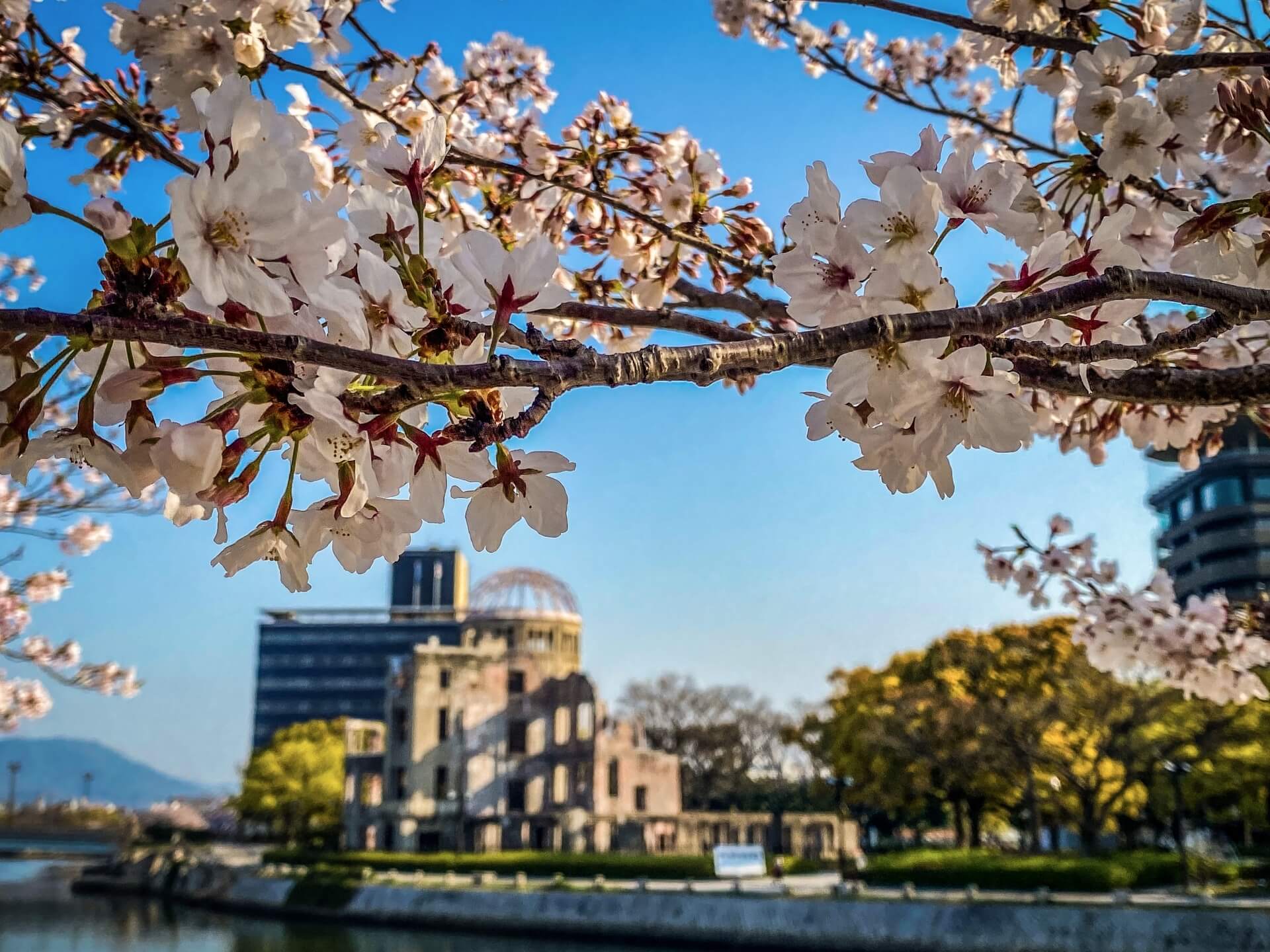
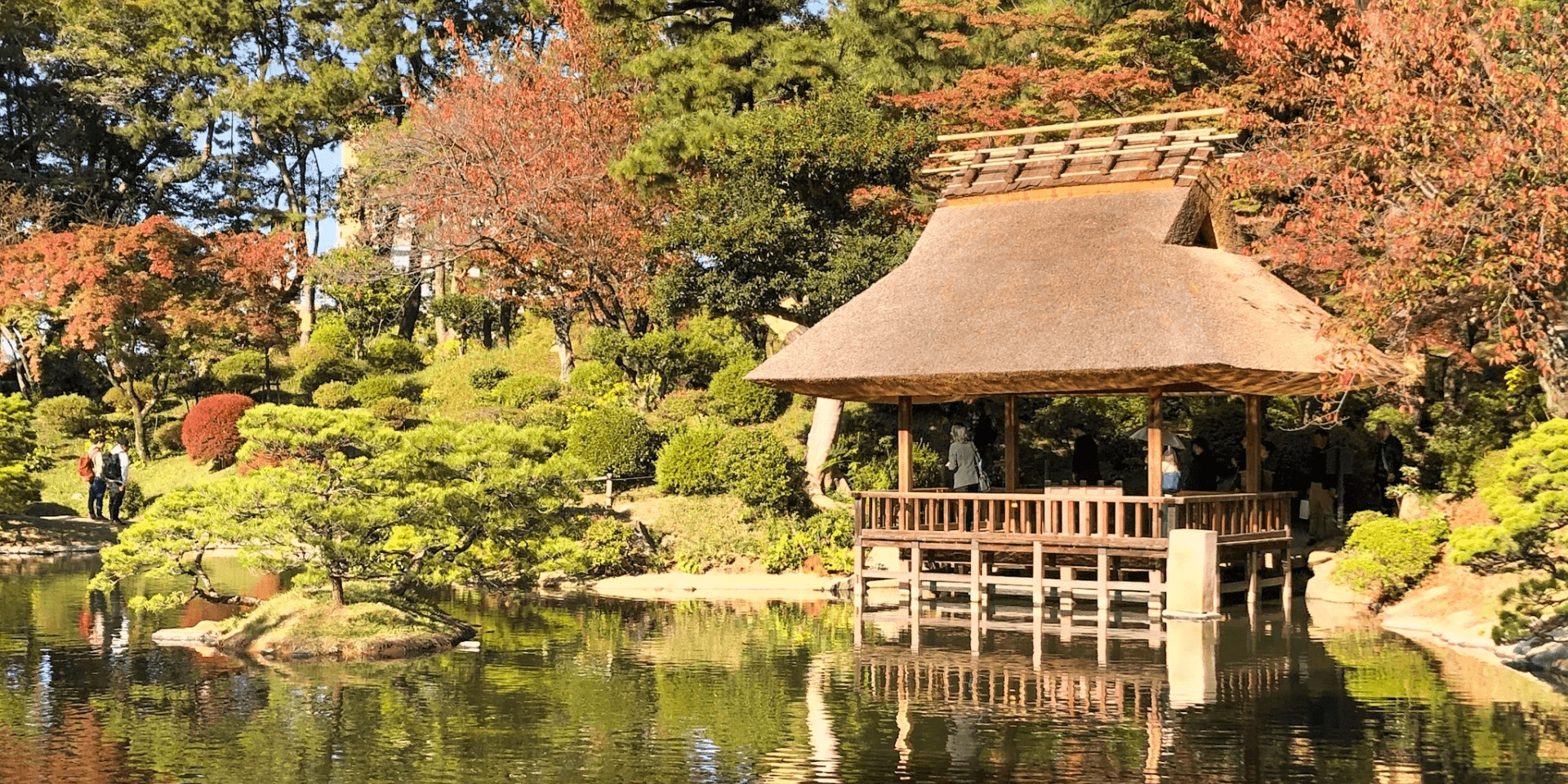
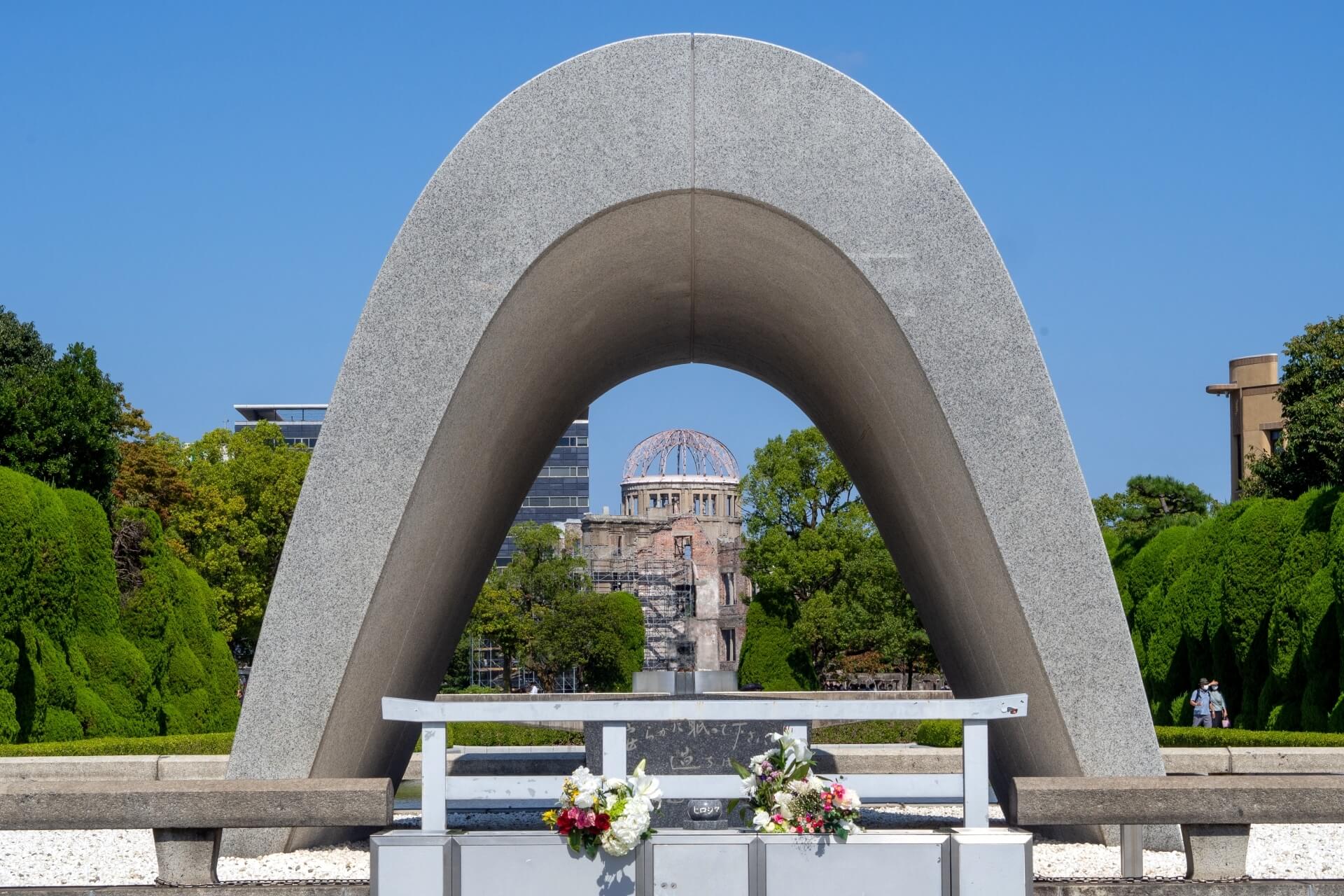
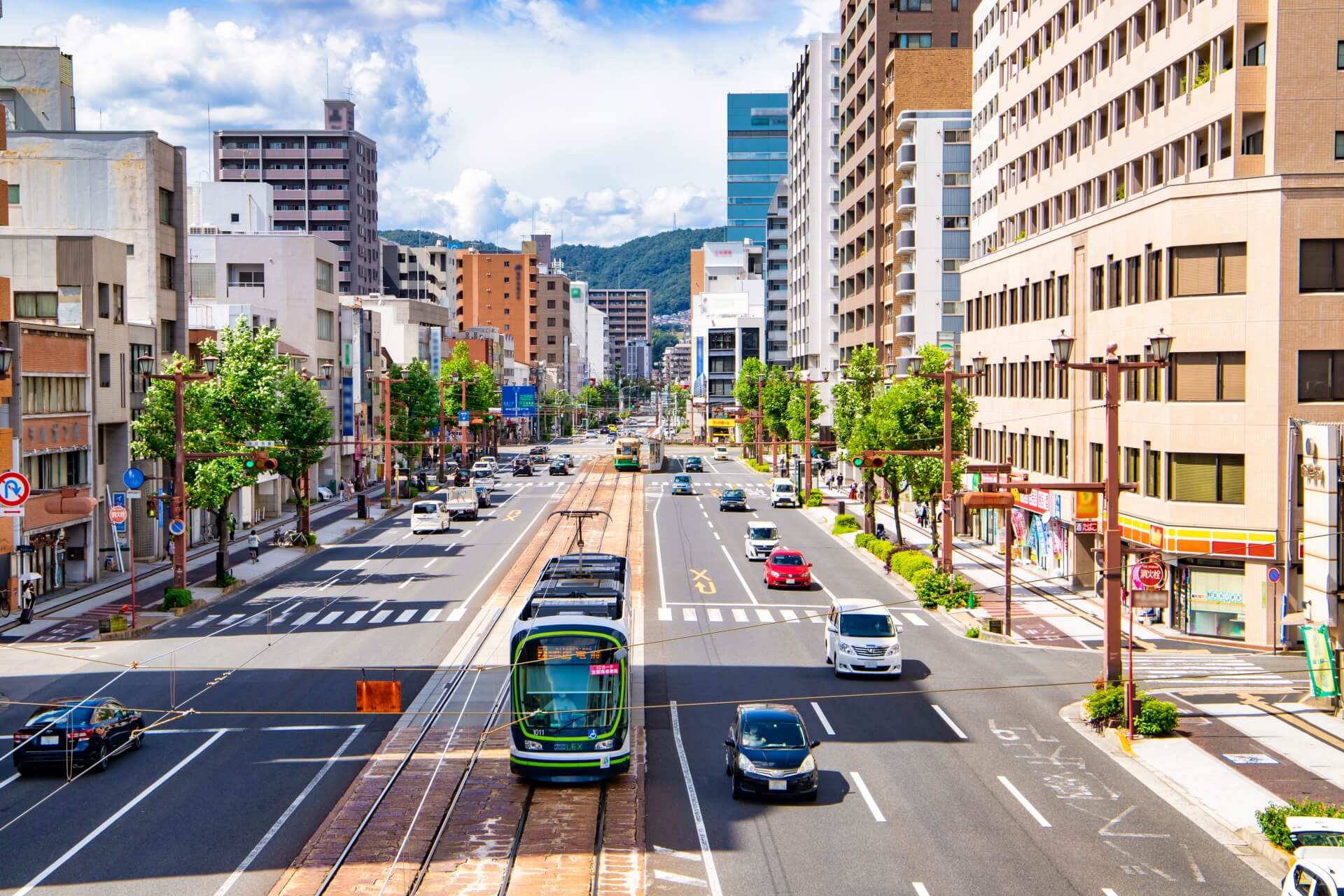
As reflected below, Hiroshima’s history is extensively and well-commemorated at sites throughout the city. For many if not most first-time visitors, these sites will be of primary interest and can occupy a full-day in Hiroshima. Once there, you will also discover that it is a thriving city, with enough to justify planning an overnight or multi-day visit. The island of Miyajima is within easy reach of the city centre with other islands and coastal areas of Hiroshima Bay also easy to access.
WHERE IS HIROSHIMA?
Hiroshima is the largest city in Hiroshima Prefecture and for many international visitors, the furthest point west they will travel during their time in Japan. It is located approximately 325km to the west of Osaka, a journey that takes as little as 80 minutes thanks to the San’yo Shinkansen / ‘Bullet Train’ running from Shin-Osaka Station to Hiroshima Station. A pleasant and highly-liveable city, Hiroshima’s history is of course tragic but should not define it. The city and surrounding region are worth visiting for many reasons, especially for travellers heading further west onto Kyushu or back toward Osaka and central Japan.
15 THINGS TO DO IN & AROUND HIROSHIMA
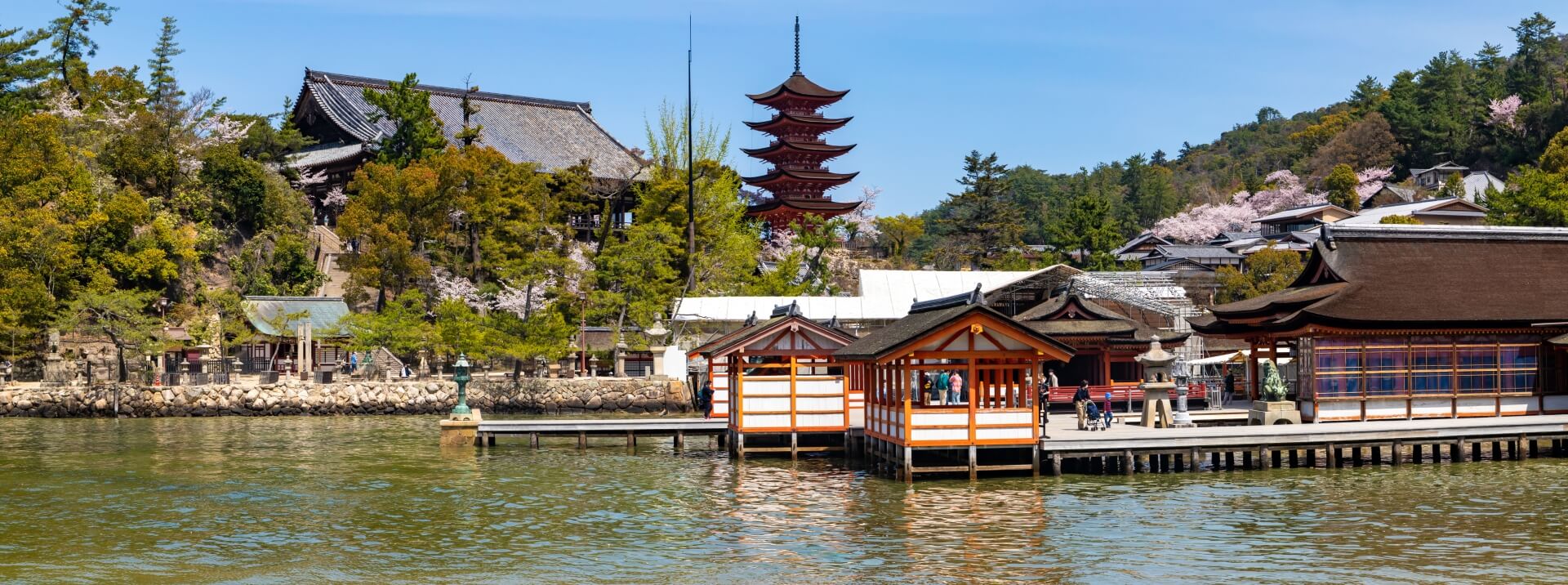
For obvious reasons, it’s possible to view Hiroshima solely through the prism of its tragic history. As the first and one of only two cities ever subjected to use of a nuclear weapon, Hiroshima occupies a hugely important place in modern history yet it’s also a thriving city of varied cultural destinations, good food and access point to Miyajima, the Setonaikai National Park and wider region of the Seto Inland Sea. But it goes without saying, that for most first-time visitors, learning of and honouring the city’s solemn history will be of most importance:
1 / HIROSHIMA PEACE MEMORIAL PARK / all year round
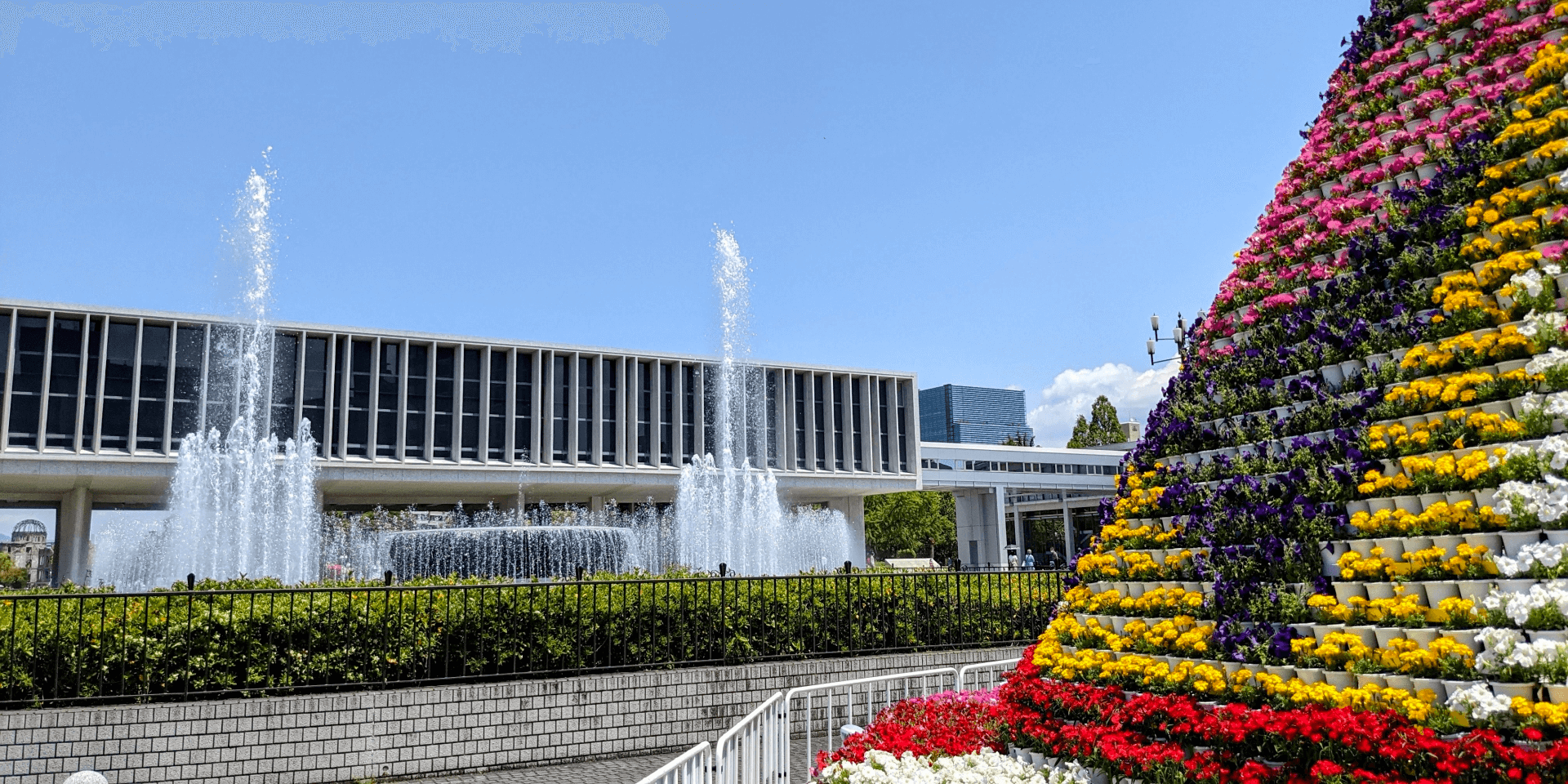
Located around 30 minutes walk or 15 minutes by tram from Hiroshima Station, the Hiroshima Peace Memorial Park (平和記念公園 / ‘Heiwa Kinen Kōen’) covers 120,000 squared metres in the centre of the city. Accessible at all times of today, the park includes multiple points of interest – the most significant of which are listed individually below – but in itself, is an expansive and tranquil in which to wander and reflect on what took place. The park covers the area directly below where the bomb fell; the former commercial and political centre of the city. Deliberately targeted for that reason, the park was created to permanently commemorate the victims of the bomb and in devotion to global peace rather than redevelop the area. The park is free to enter and can be accessed from multiple points. To get there from Hiroshima Station, all three routes of the Hiroshima Sightseeing Loop Bus or ‘Meipuru-pu’ stop at the park. A one-time ride costs JPY200 or you can buy a full-day pass for JPY400. These services are also covered by the Japan Rail (JR) Pass. Alternatively, tram line No.2 and No.6 head toward the park. It takes around 15 minutes / JPY190 to reach the Genbaku-Domu Mae stop from the station.
2 / PEACE MEMORIAL MUSEUM / all year round
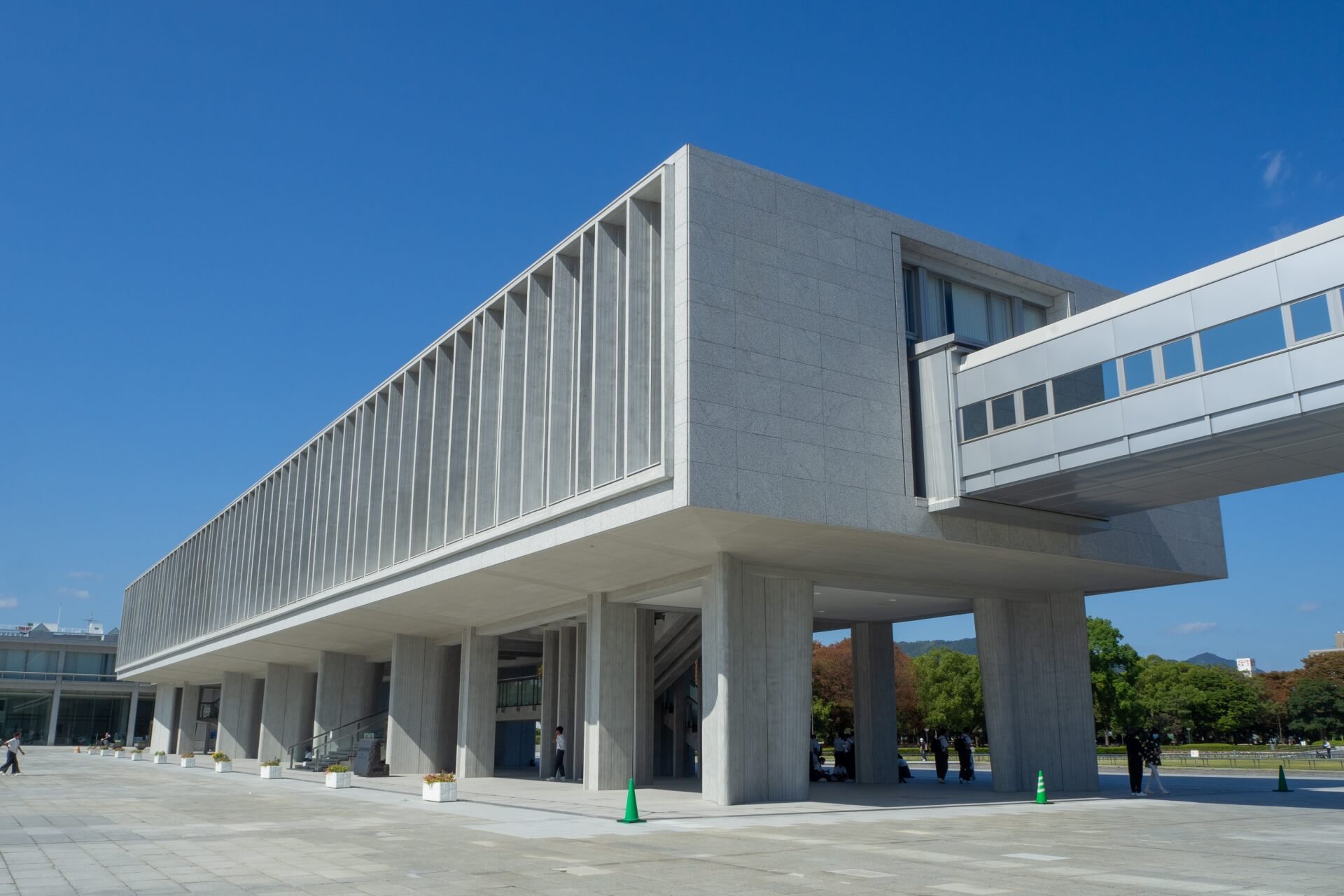
The Peace Memorial Museum is the park’s central facility. Housed in two buildings, the museum commemorates the events of August 6th 1945 and its aftermath. The museum is intended to honour those of who lost their lives and serve as a beacon for global peace, and though harrowing, is very well-presented and suitable for visitors of all ages. Extensive information is available along with English, Chinese, Korean and other foreign language audio guides for JPY400. The museum is staffed by volunteer guides who are there to assist with your experience and may approach you to provide information – well-worth engaging with if you have the chance. The museum is open daily (other than Dec.30-31) from 08:30 to 18:00. Opening hours are extended until 19:00 in August and shortened to close at 17:00 from December to February. Last entry is 30 minutes before closing. Admission costs JPY200 for adults and JPY100 for high school students. Younger children can enter free of charge. The museum is located within easy walk of the Peace Boulevard.
3 / HIROSHIMA VICTIMS MEMORIAL CENOTAPH / all year round
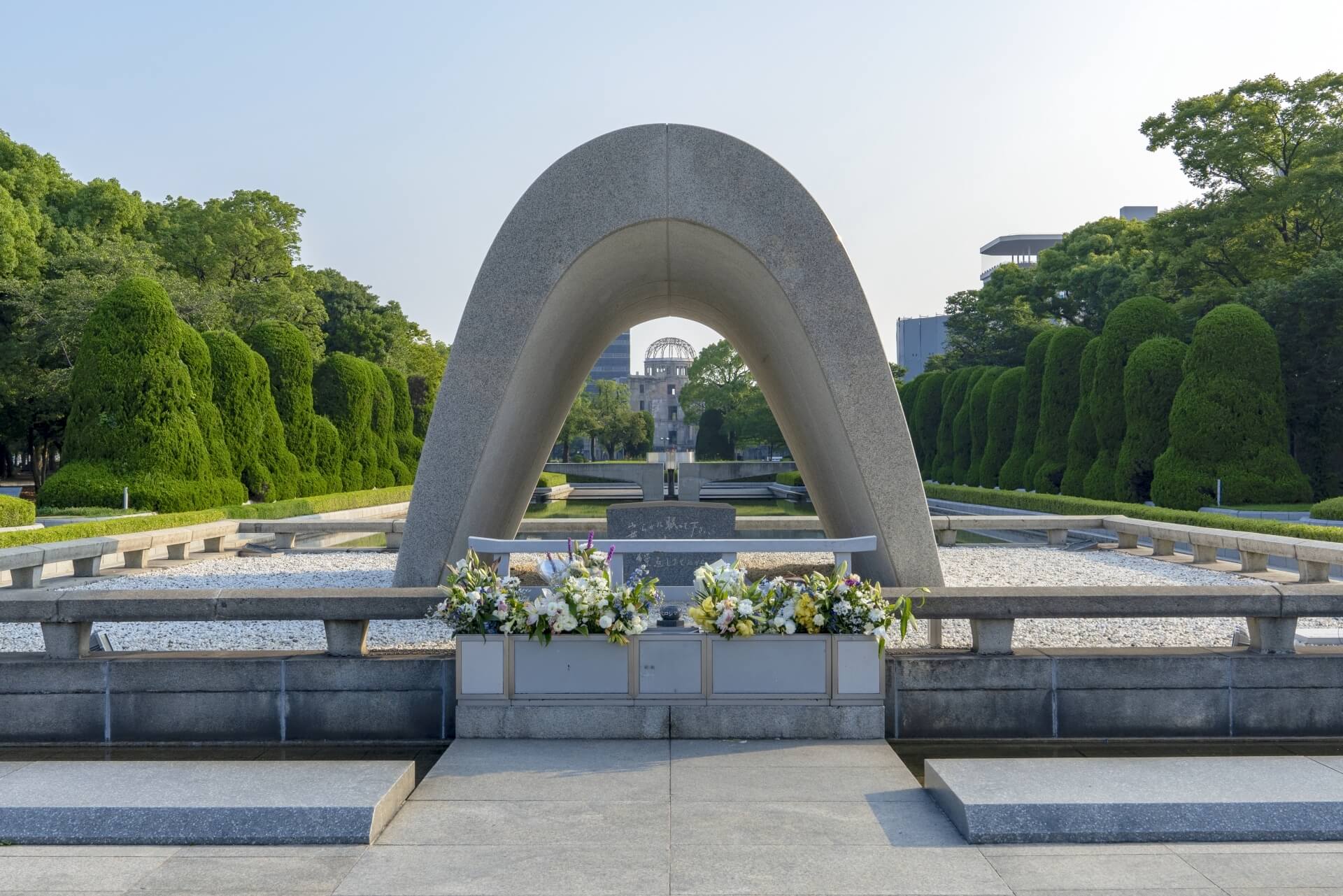
Just to the north of the museum but still within the park, the Hiroshima Victims Memorial Cenotaph commemorates the many victims of the bomb and its aftermath. Sitting within the Pond of Peace, the cenotaph looks toward ‘Flame of Peace’. Lit in August 1964, the flame is an enduring reminder of the continued threat of nuclear weapons and intended to burn ‘until the day when all such weapons shall have disappeared from the earth’. This area of the park hosts events each year on August 6th as people gather to commemorate the victims and reflect of the immense loss of that day and what followed in the years after. This area of the park is accessible at all times of day and is free to enter.
4 / CHILDREN’S PEACE MONUMENT / all year round
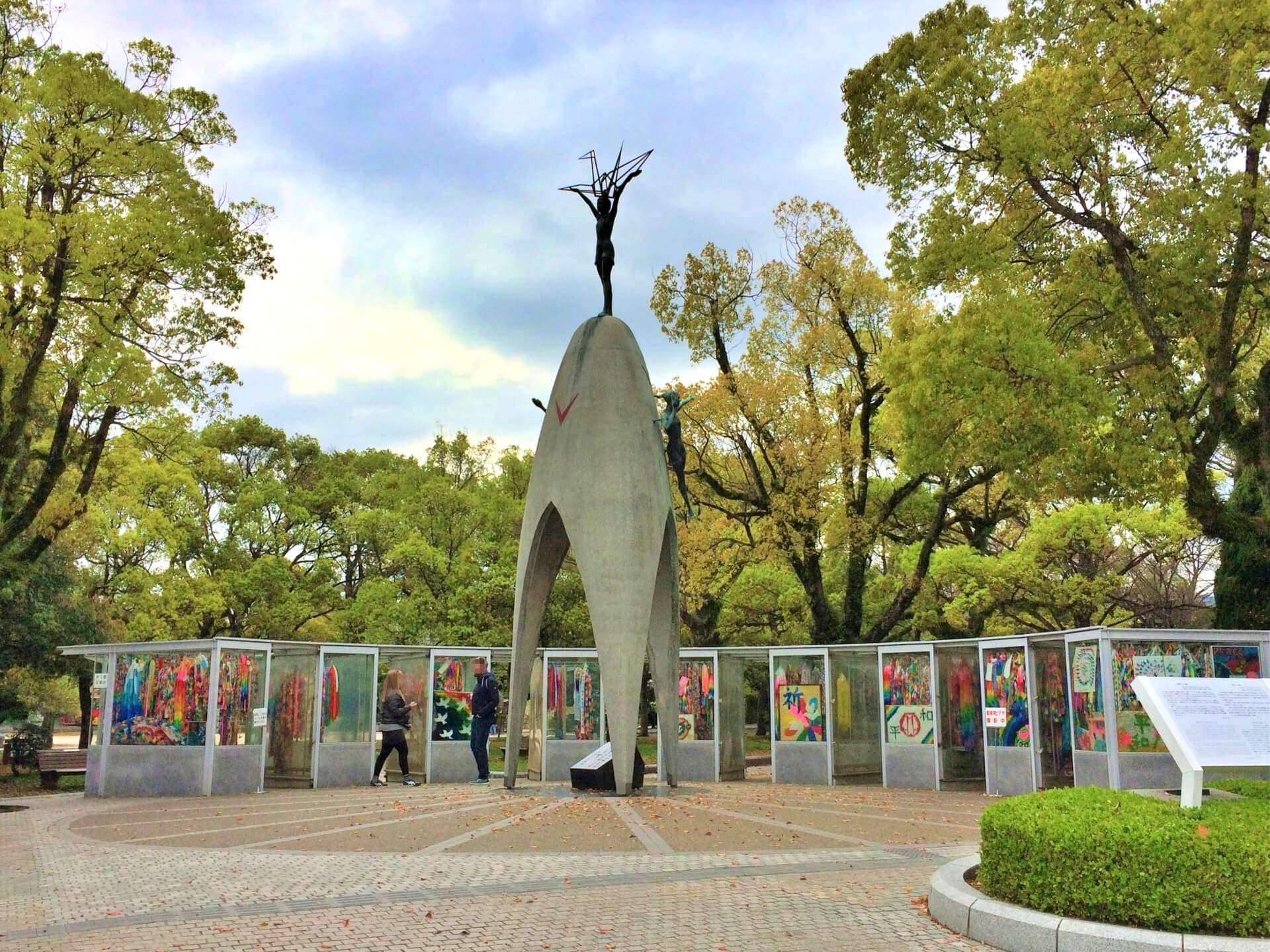
When the bomb fell at 8:15 in the morning on August 6th, many school children were out in the open going about their morning activities. An unknown but unbearably large number were victims of the bomb blast, with others condemned to become sick in the years to come. Sadako Sasaki was one such child. Having survived the bombing seemingly unharmed at the age of two, Sadako developed leukemia when aged eleven – an apparent result of radiation exposure. While in hospital, Sadako set about folding one thousand ‘orizuru’ (paper cranes), in-keeping with a belief that should you do so, you will be granted a wish.
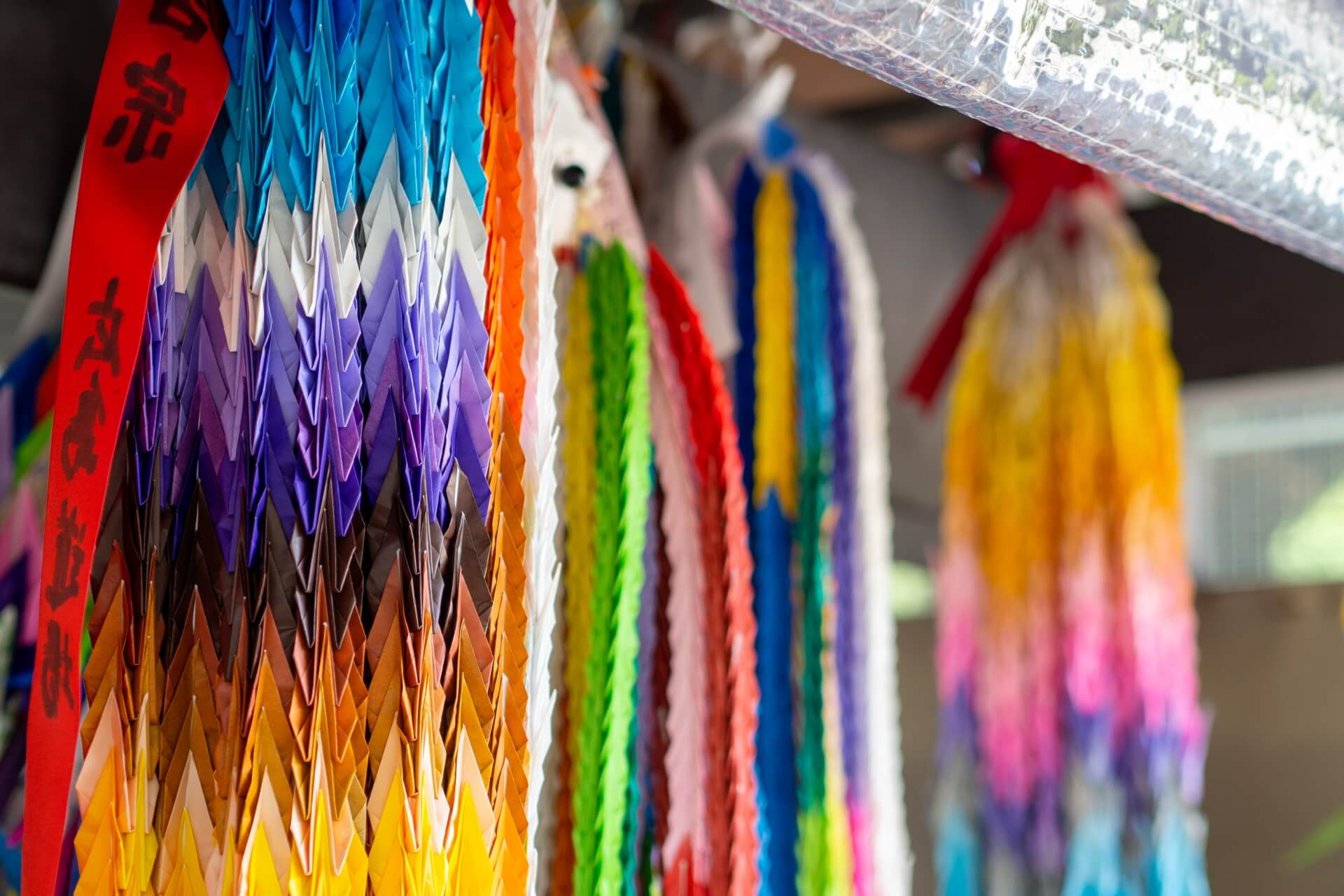
On October 25th 1955, Sadako passed-away aged twelve. Never to be forgotten, she came to represent the children lost to the bomb, all of whom are commemorated by the Children’s Peace Monument at the north end of the park. Although a simple monument, millions of paper cranes are left in commemoration each year, making it one of the park’s most beautiful and poignant memorials. It is accessible at all times of day and is free of charge.
5 / ATOMIC BOMB DOME / all year round
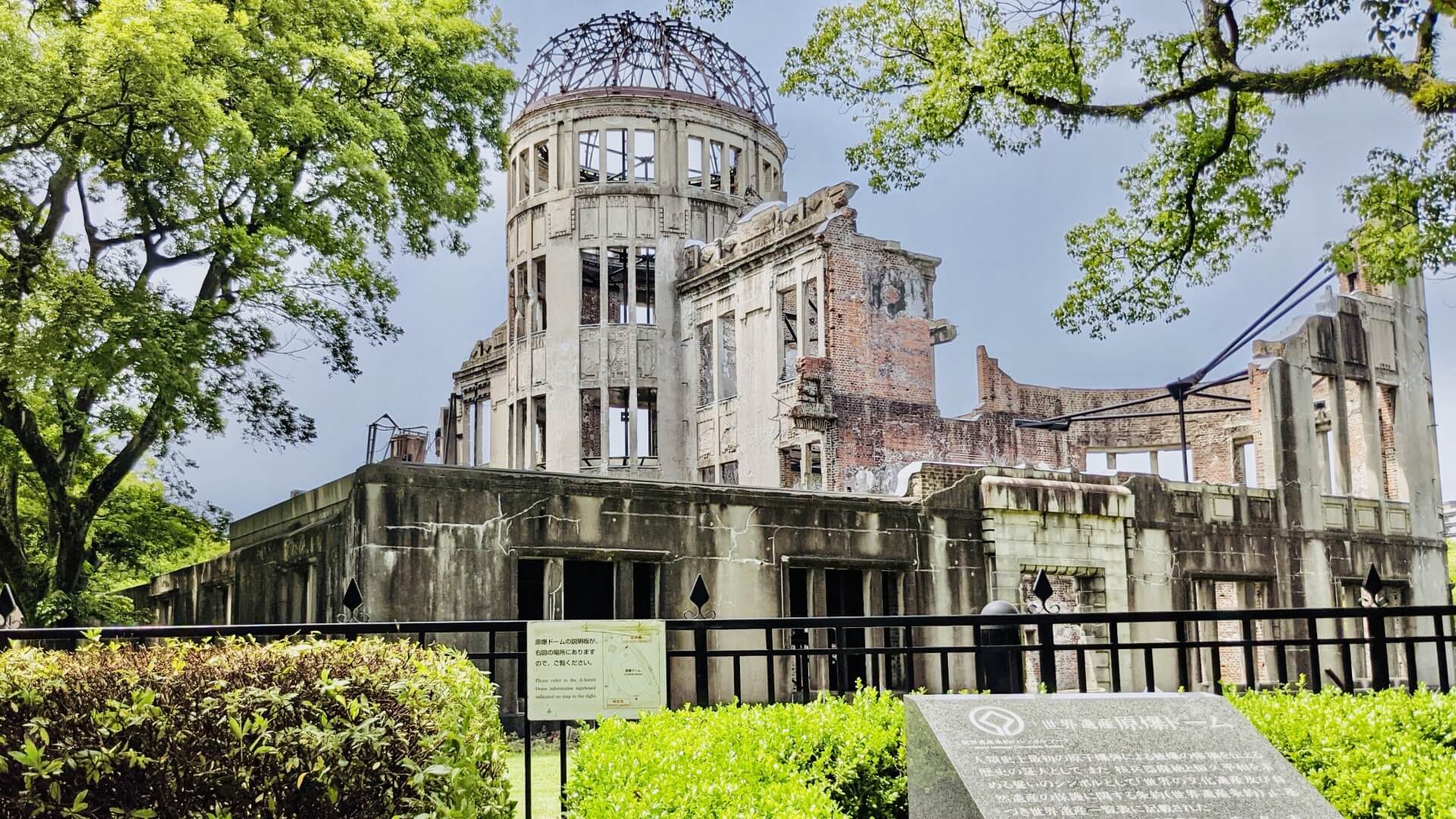
Also known as the ‘Hiroshima Peace Memorial’, the Atomic Bomb Dome sits across the Motoyasu River, separated from the main park. The skeletal shell of what was the domed ‘Prefectural Industrial Promotion Hall’, was one of the few buildings to survive within the primary blast zone. Afforded World Heritage status in 1996, the building stands in stark testament to Hiroshima’s tragic history and position in the global consciousness. The building stands in the open and while you cannot enter it, it is accessible at all times of day, free of charge.
6 / HIROSHIMA CASTLE / all year round
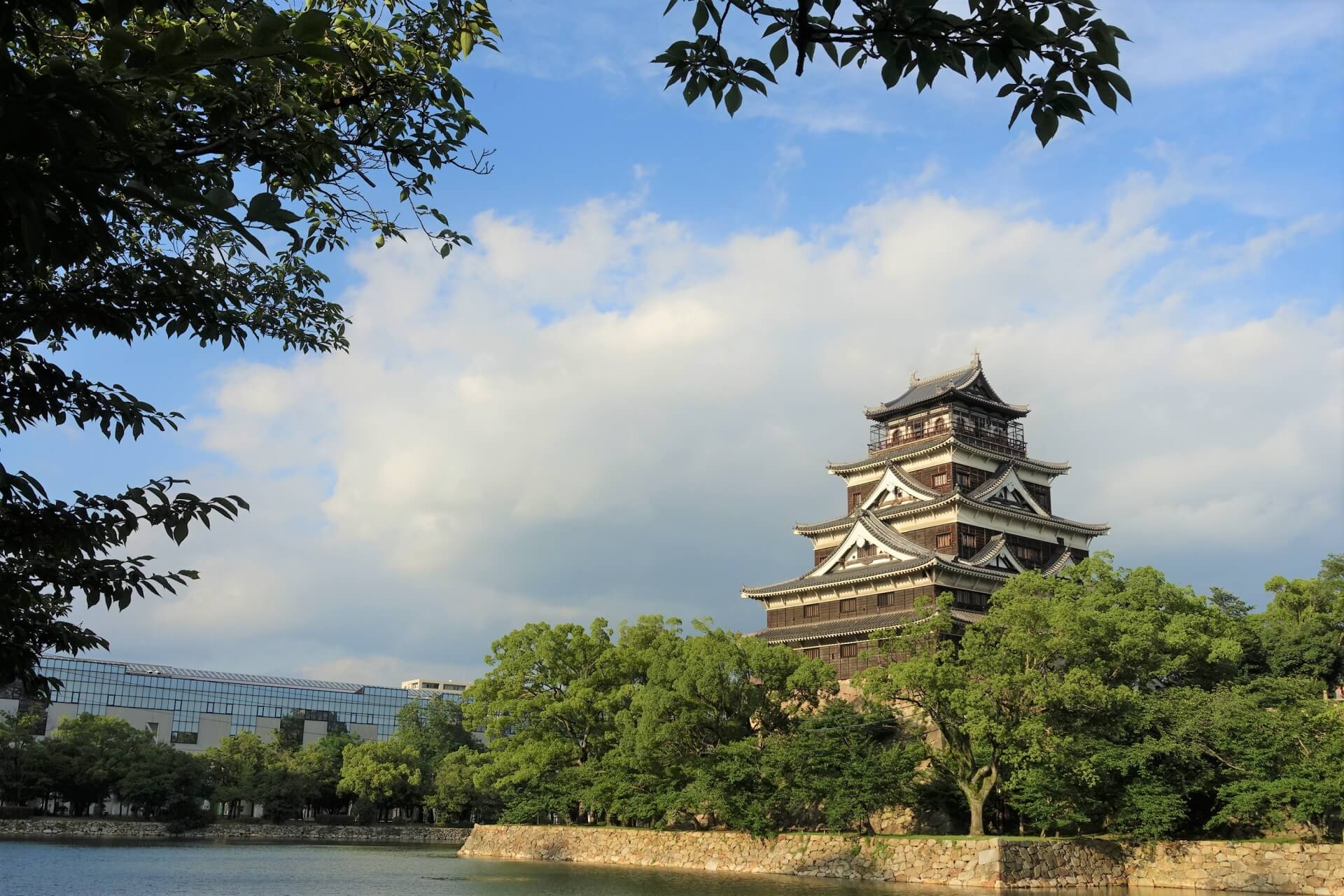
Around 15 minutes walk from the Atomic Bomb Dome, Hiroshima Castle stands in beautiful testament to the history of the city prior to August 1945. First built in 1589, the castle was the political and economic heart of the city. Spared from the widespread destruction of most of Japan’s castles during the Meiji Restoration, the castle was tragically lost on August 6th 1945. Thirteen years after is destruction, a reconstruction of the original castle opened in 1958. It stands five-storeys / 27 metres in height, set on a stone foundation which in itself stands around 12 metres tall. In more recent years, reconstructions of other buildings and former defensive structures have also added to the overall historic character of the castle precinct. From the top floor of the castle, visitors can enjoy panoramic views of the city. The castle is open daily (other than Dec.29-31) from 09:00 until 18:00 (closing at 17:00 from December to February), with last entry 30 minutes before closing. Admission to the castle grounds is free of charge however entry to the castle itself is JPY370. To get there from the Peace Memorial Park you’ll need to cross over the Motoyasu Bridge and head past the Atomic Bomb Dome to the castle – a walk of around 1.5km / 20 minutes. If you’re headed to the castle from Hiroshima Station, the orange and lemon routes of the Hiroshima Sightseeing Loop Bus head to the castle in under 10 minutes.
7 / SHUKKEIEN GARDEN / all year round
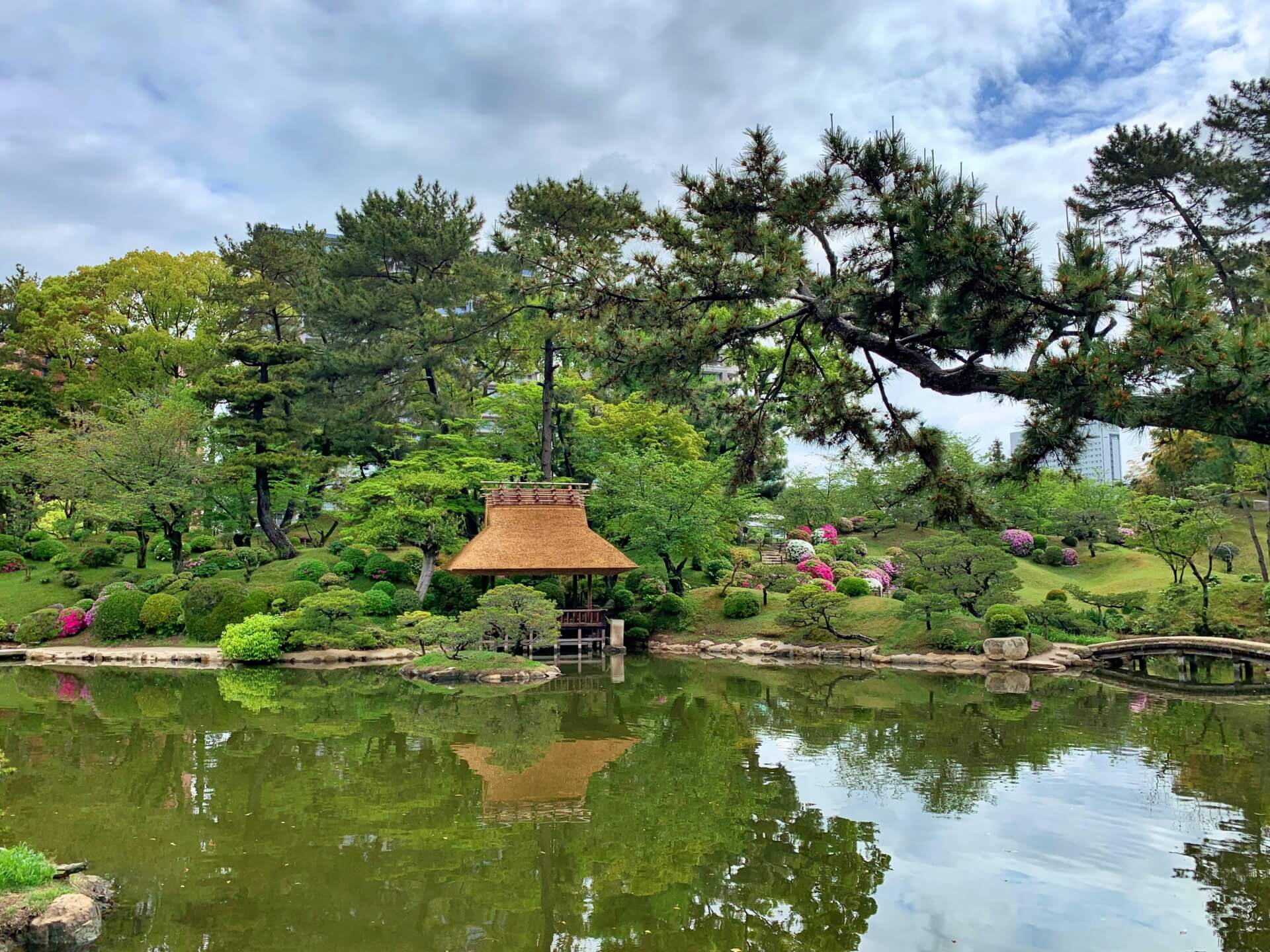
Shukkeien is a traditional Japanese garden located between the castle and Hiroshima Station – around 5 to 7 minutes walk from either starting point. Established in 1620, the garden follows the classic principles of Japanese garden design in mimicking features of the natural world in miniature mountains, waterfalls, forests and valleys. Pathways connect each area of the garden with the central pond featuring a couple of teahouses at which to enjoy the atmosphere and tranquil views on offer, with a green tea and traditional snack at hand.
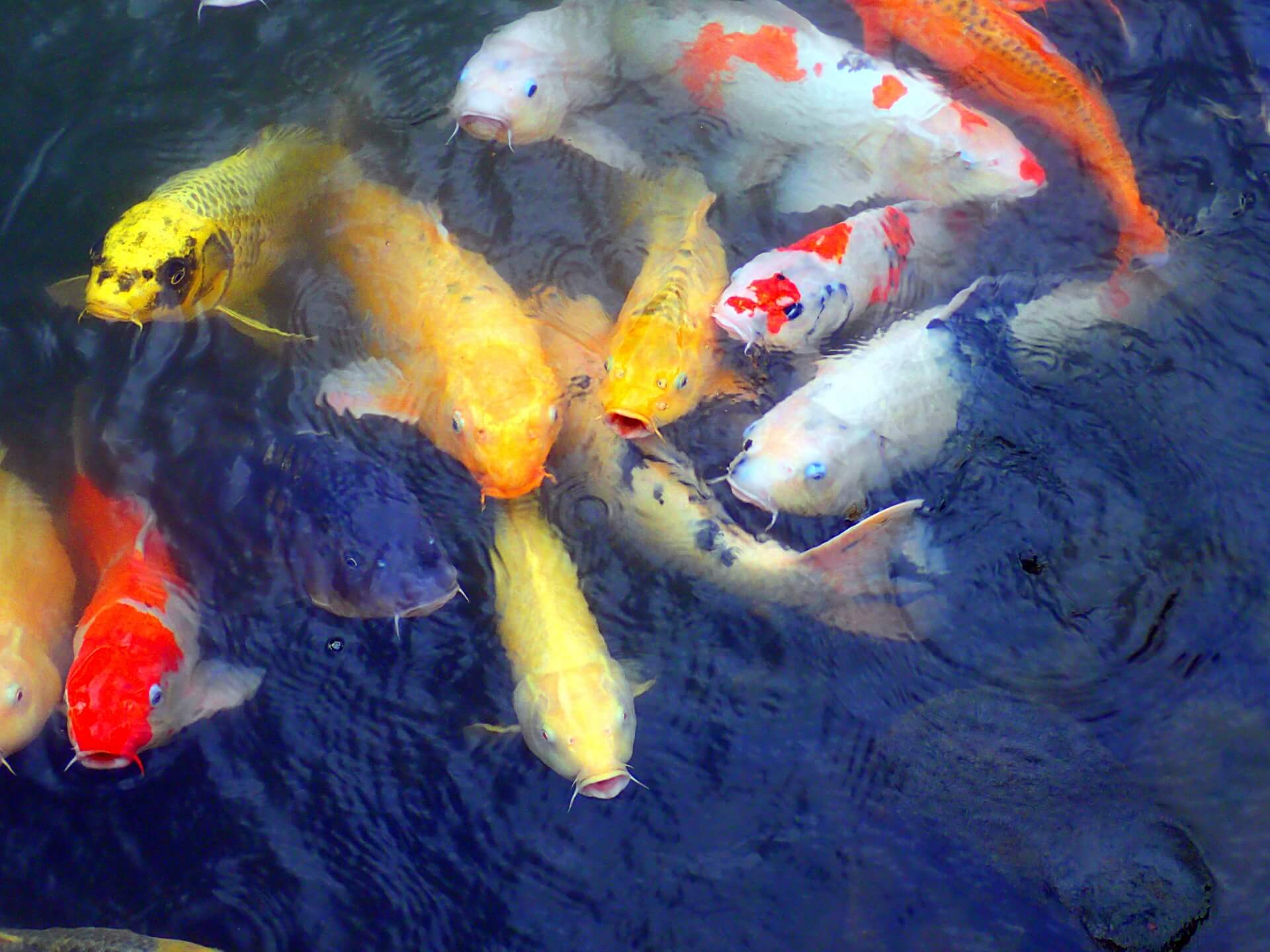
The garden is open daily (other than Dec.29-31) from 09:00 to 18:00 (or until 17:00 from October to March), with last admission 30 minutes before closing. Admission is JPY260. An easy walk from both the castle and Hiroshima Station, the garden is best accessed on-foot.
8 / EAT BIG IN ‘OKONOMIMURA’ / all year round
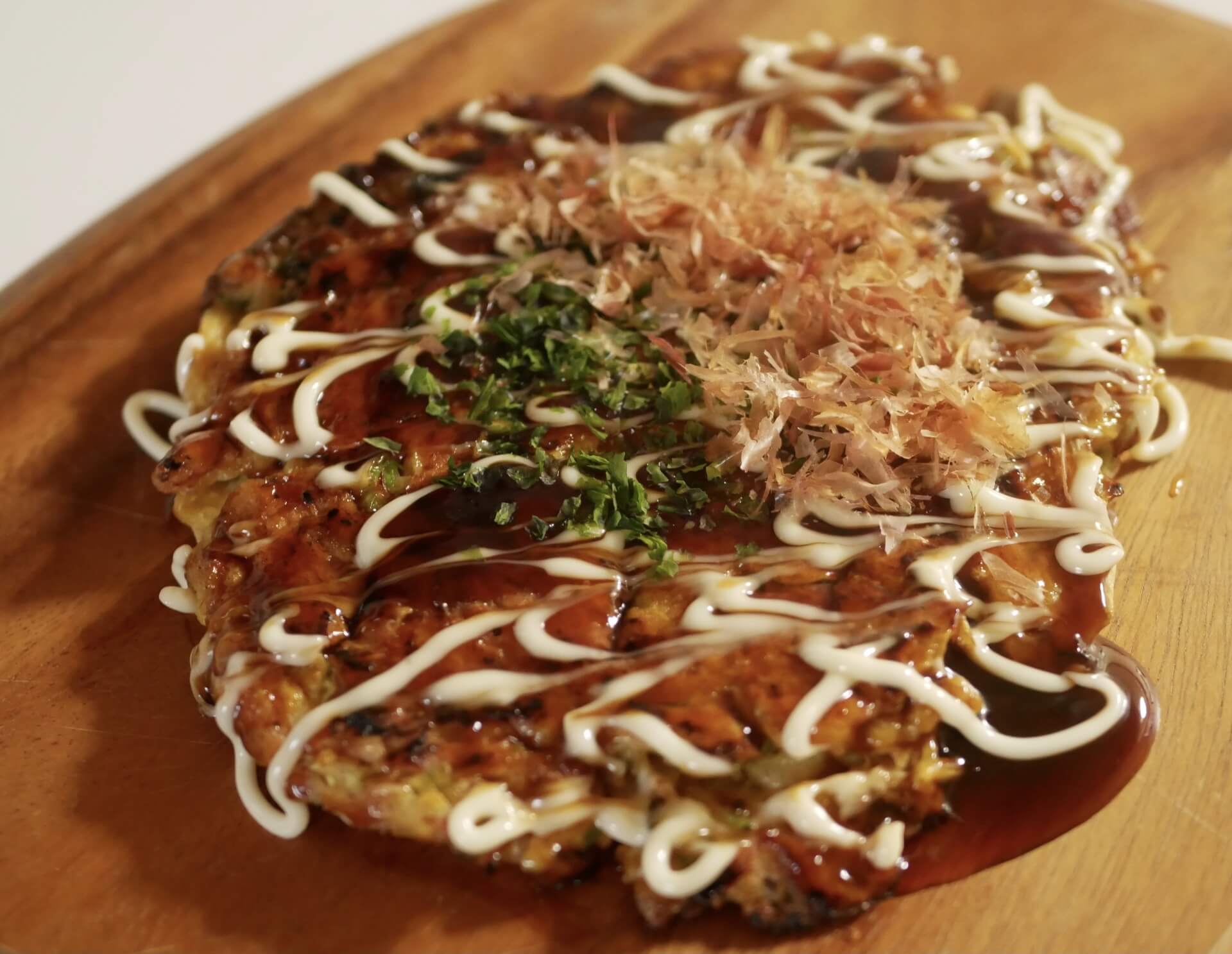
One of the great pleasures of travel is being led by your taste buds and in Hiroshima that means heading to Okonomimura. Named after the city’s ‘okonomiyaki’, Okonomimura or ‘Okonomi Village’ has lots of restaurants serving the local-take on one of Japan’s tastiest dishes. Sometimes referred to as a ‘Japanese pancake’, okonomiyaki combines cabbage, batter and a huge variety of other ingredients that are then cooked on a hot plate before being lavishly covered in sauce. Slightly thinner than the famous okonomiyaki of Osaka, eating Hiroshima-style comes with the usual range of ingredients including pork, seafood, cheese and many other tasty additions. Okonomimura is located around 5 minutes by tram from Hiroshima Station – you can use lines 1, 2, 6 or 20 – or also accessible using the Hiroshima Sightseeing Loop Bus.
9 / VISIT MIYAJIMA & ITSUKUSHIMA SHRINE / all year round
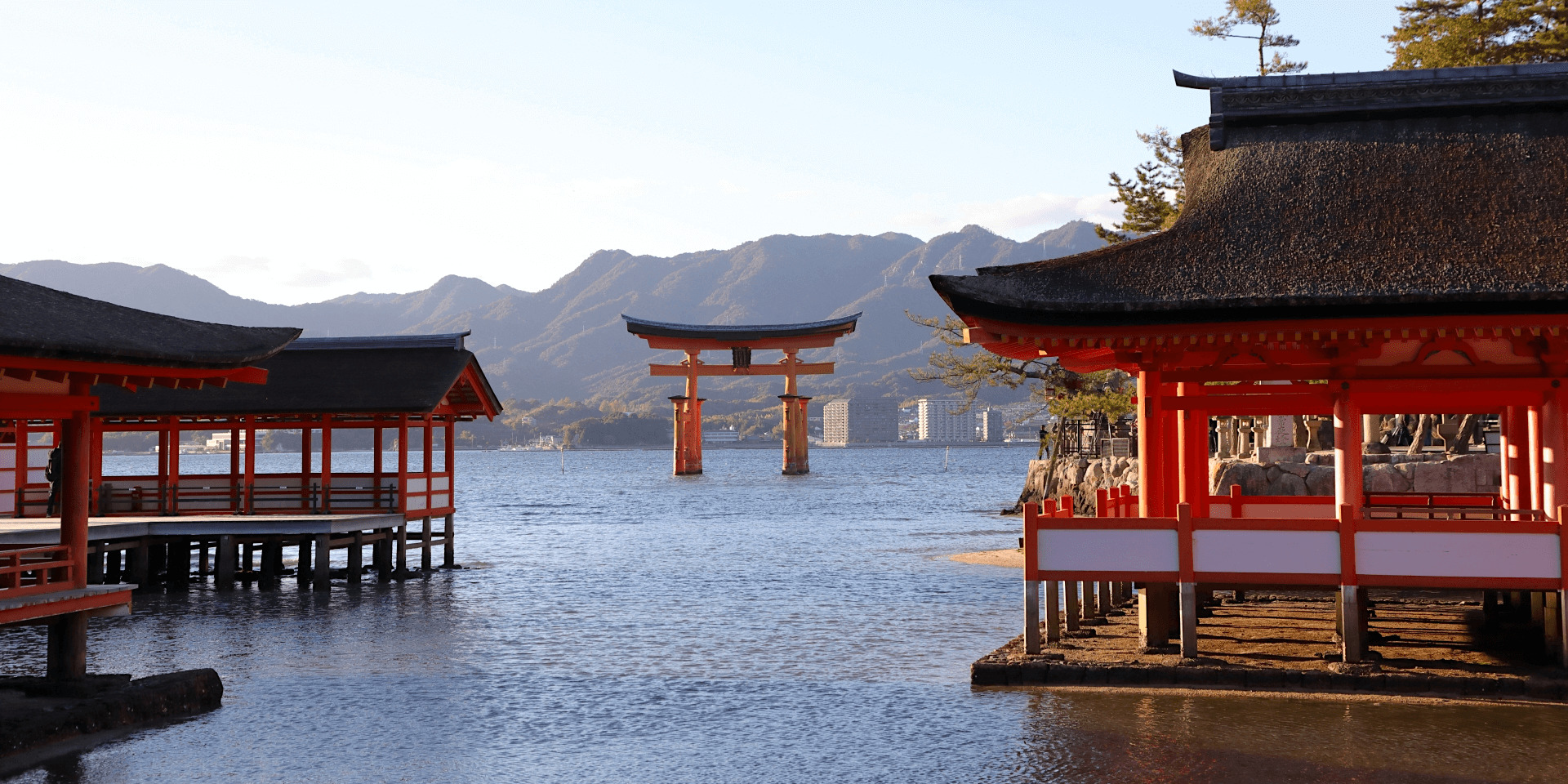
Miyajima is a small island within easy reach of central Hiroshima – around 60 minutes by a combined tram or train and short ferry ride. The island is most famous the seaside Itsukushima Shrine and its famous sea-bound ‘torii’ gate. Indeed the island’s actually name is Itsukushima although it is most commonly referred to as Miyajima or ‘Shrine Island’. Both the shrine and gate are built upon the seabed and water-bound at high-tide while you can walk out to the gate at low-tide.
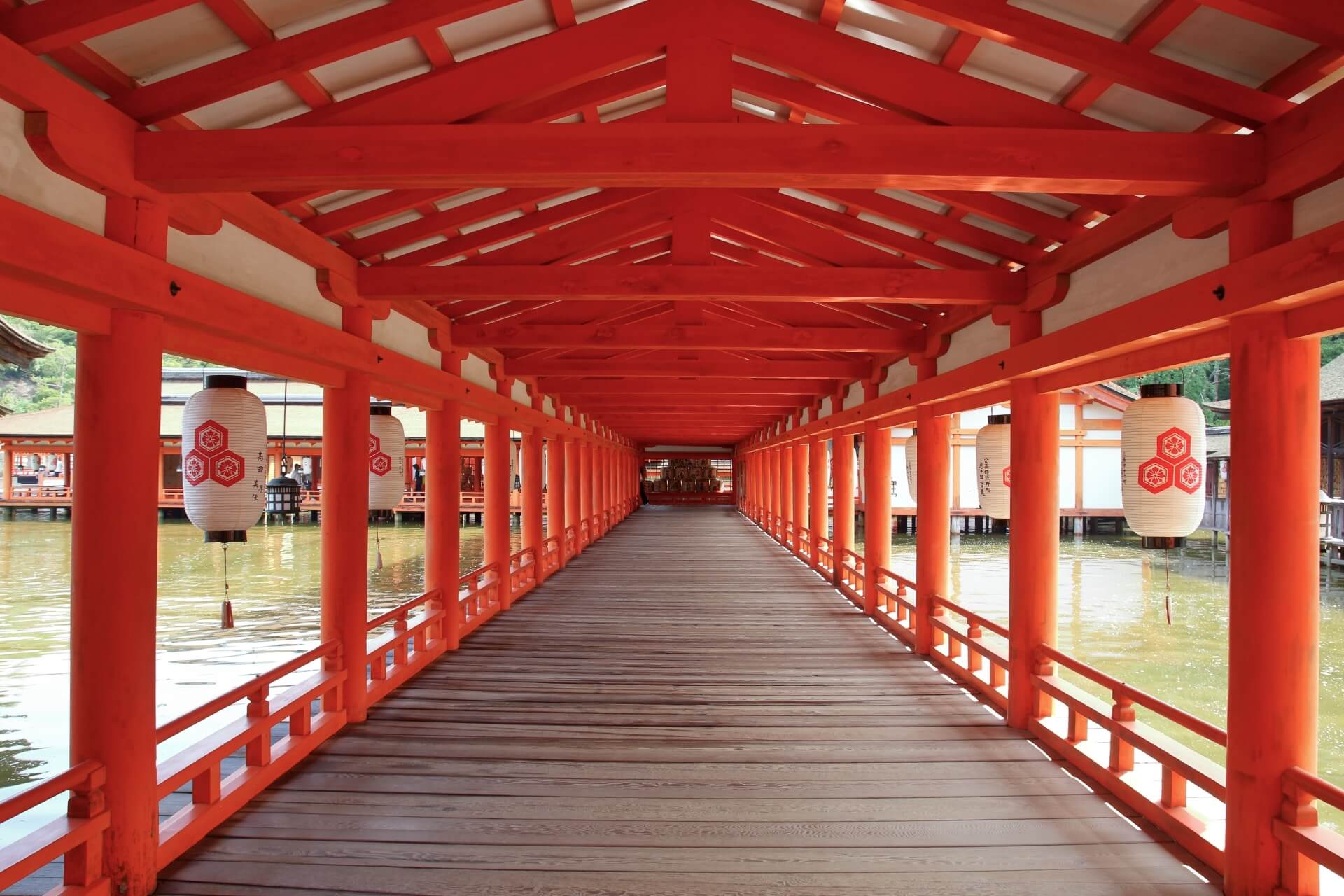
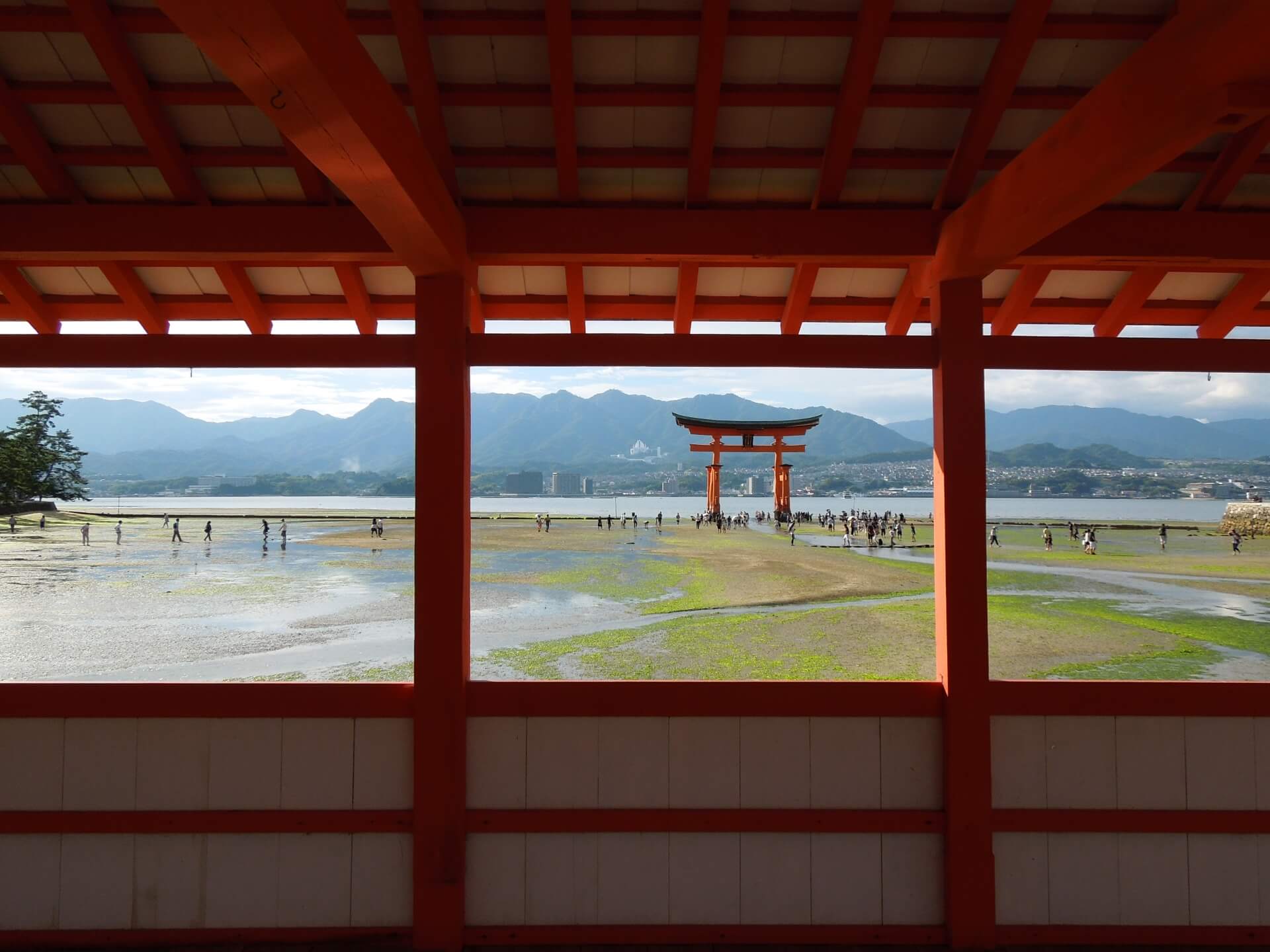
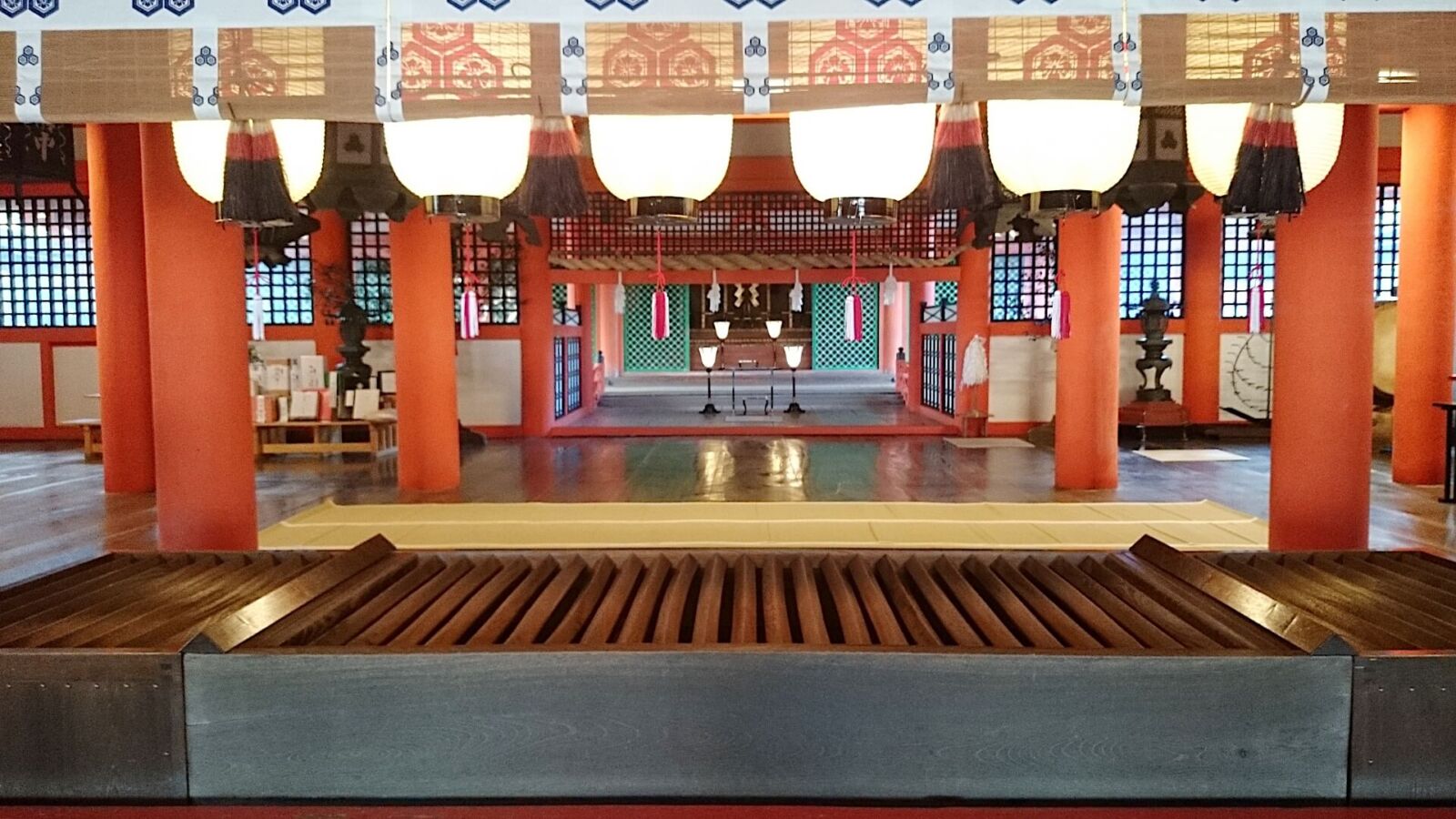
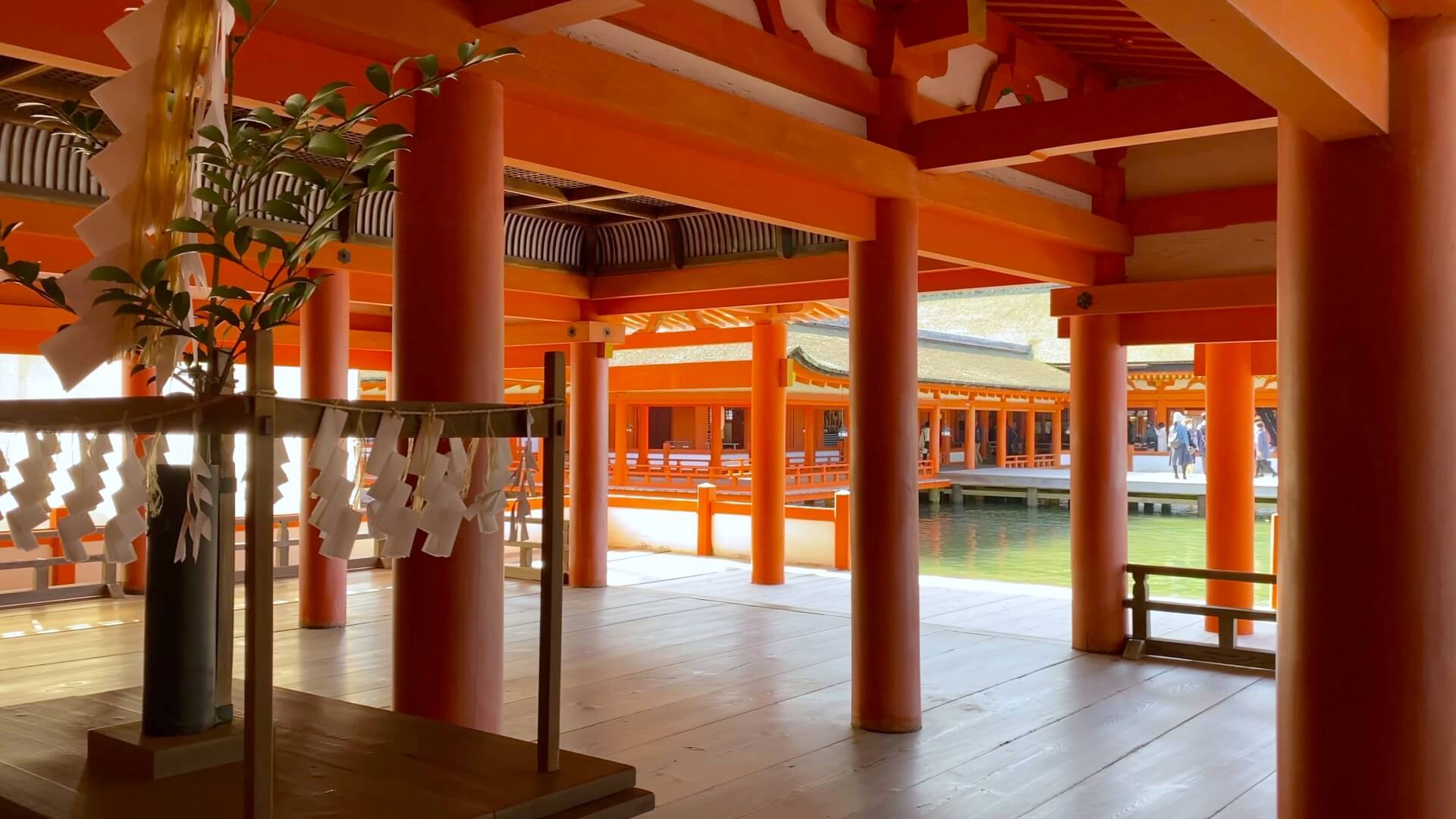
A beautiful sight through the day, the shrine and gate are illuminated until 23:00 allowing visitors to wander until late in the evening and capture some beautiful photos of one of Japan’s most famous cultural spots. It’s important to note that as of 2022, the gate and section of the shrine are under renovation and covered by scaffolding.
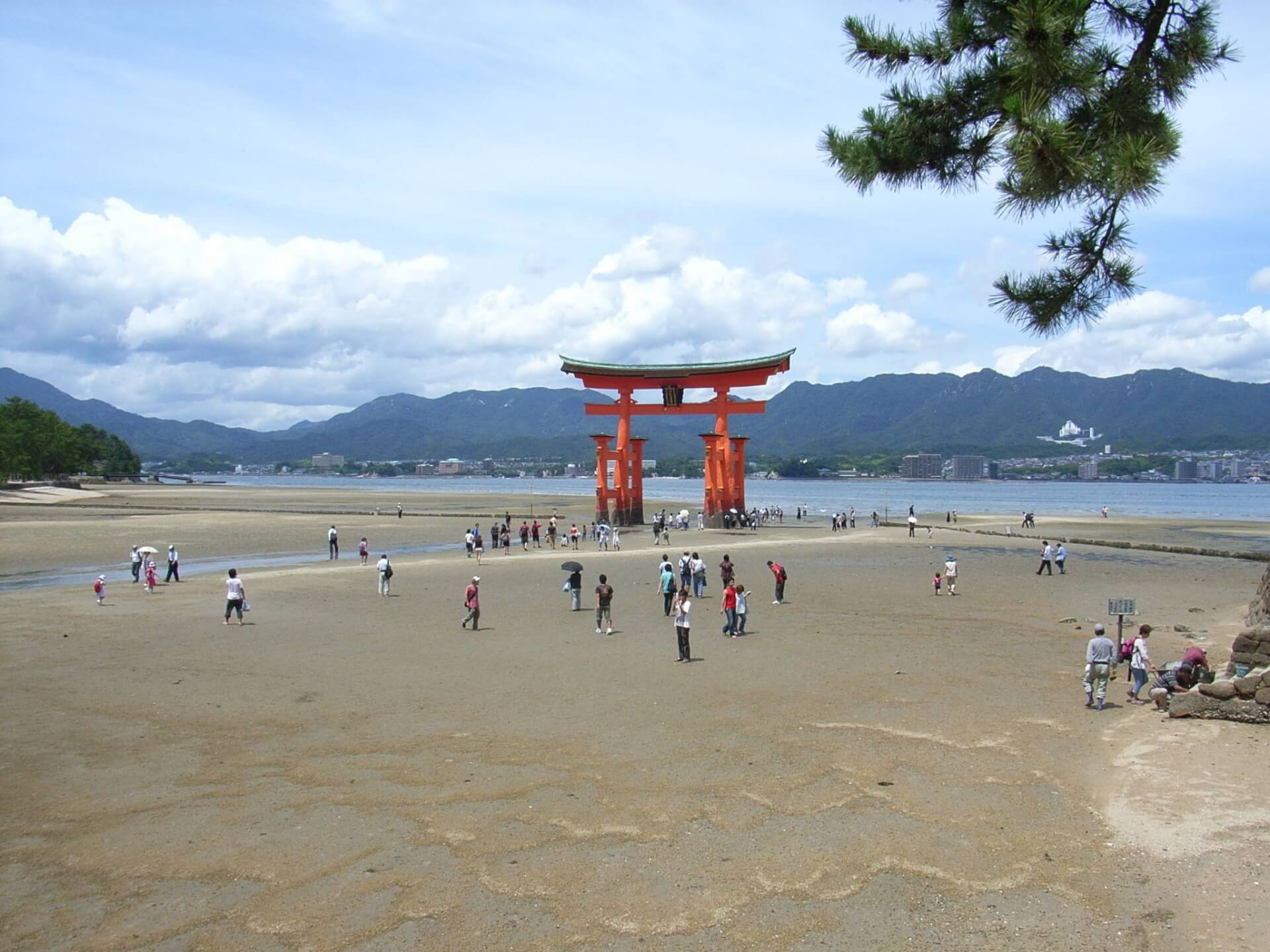
There is no announcement as to when the work will be completed and it affects the experience of visiting. The shrine is around 10 minutes walk from the ferry pier. To get to Miyajima from Hiroshima Station, take the local San’yo Main Line to Miyajimaguchi Station – 25 minutes / JPY420 – and then take the ferry across to the island – 10 minutes / JPY180. The shrine is open daily from 06:30 until 18:00 (or until 17:00 or 17:30 from mid-October until February). Admission is JPY300.
10 / STAY ON MIYAJIMA / all year round
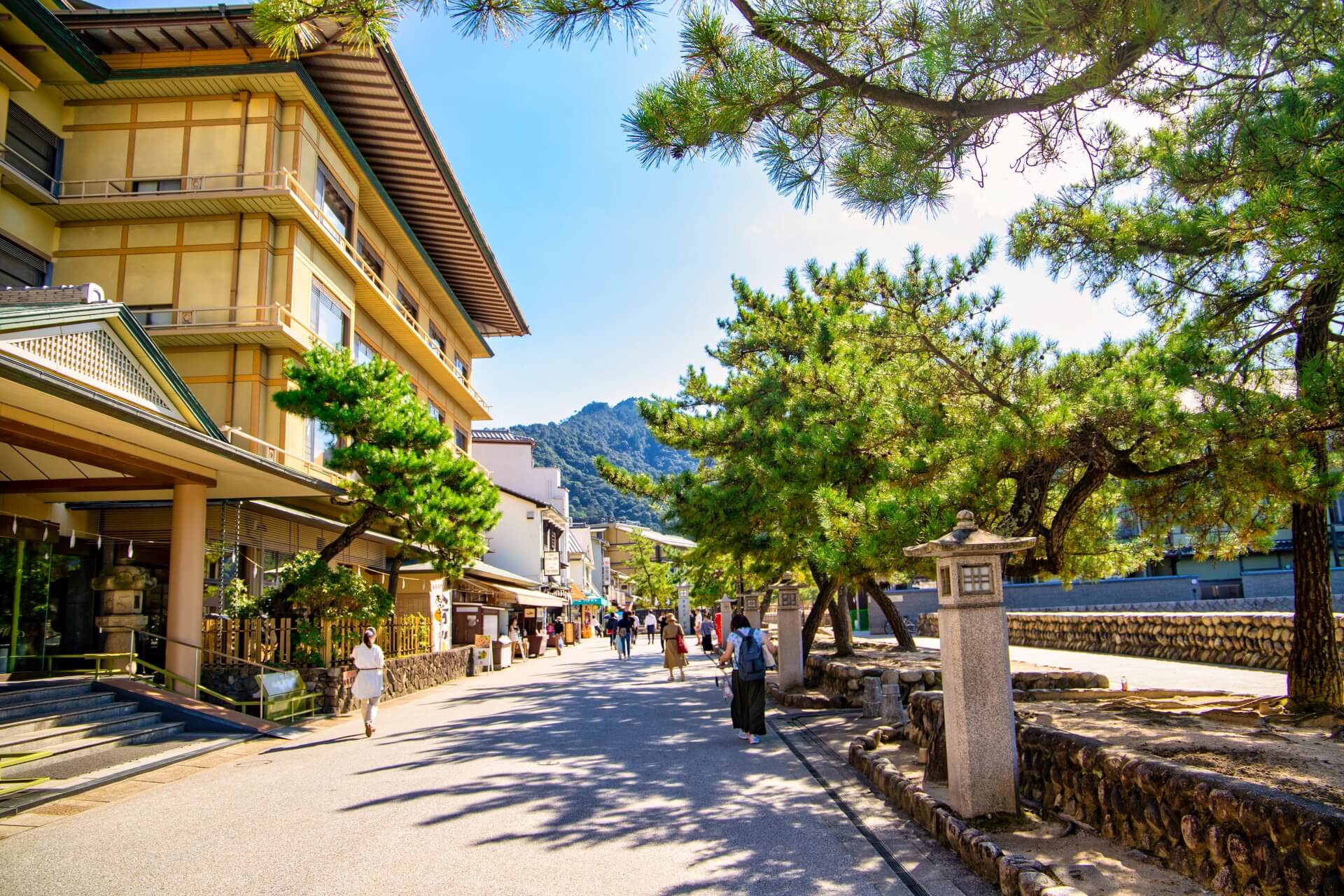
For anyone headed to Miyajima to visit Itsukushima Shrine, it’s worth considering staying on the island overnight. As mentioned above, the shrine and gate are illuminated every evening until 23:00, imbuing the small island with a lovey atmosphere at night. Crowded during the day, staying overnight is also a great way to get the most out of your time on Miyajima after the large tour groups leave in the afternoon and return the following day. There’s a good range of accommodation to choose from ranging from mid-size to large hotels along with plenty of ‘ryokan’ (traditional guesthouses), many of which are family run. Miyajima has a pleasant almost sub-tropical climate and character, making it a great place to wander, try the seafood and enjoy an ice cold drink in the hot and humid summer months.
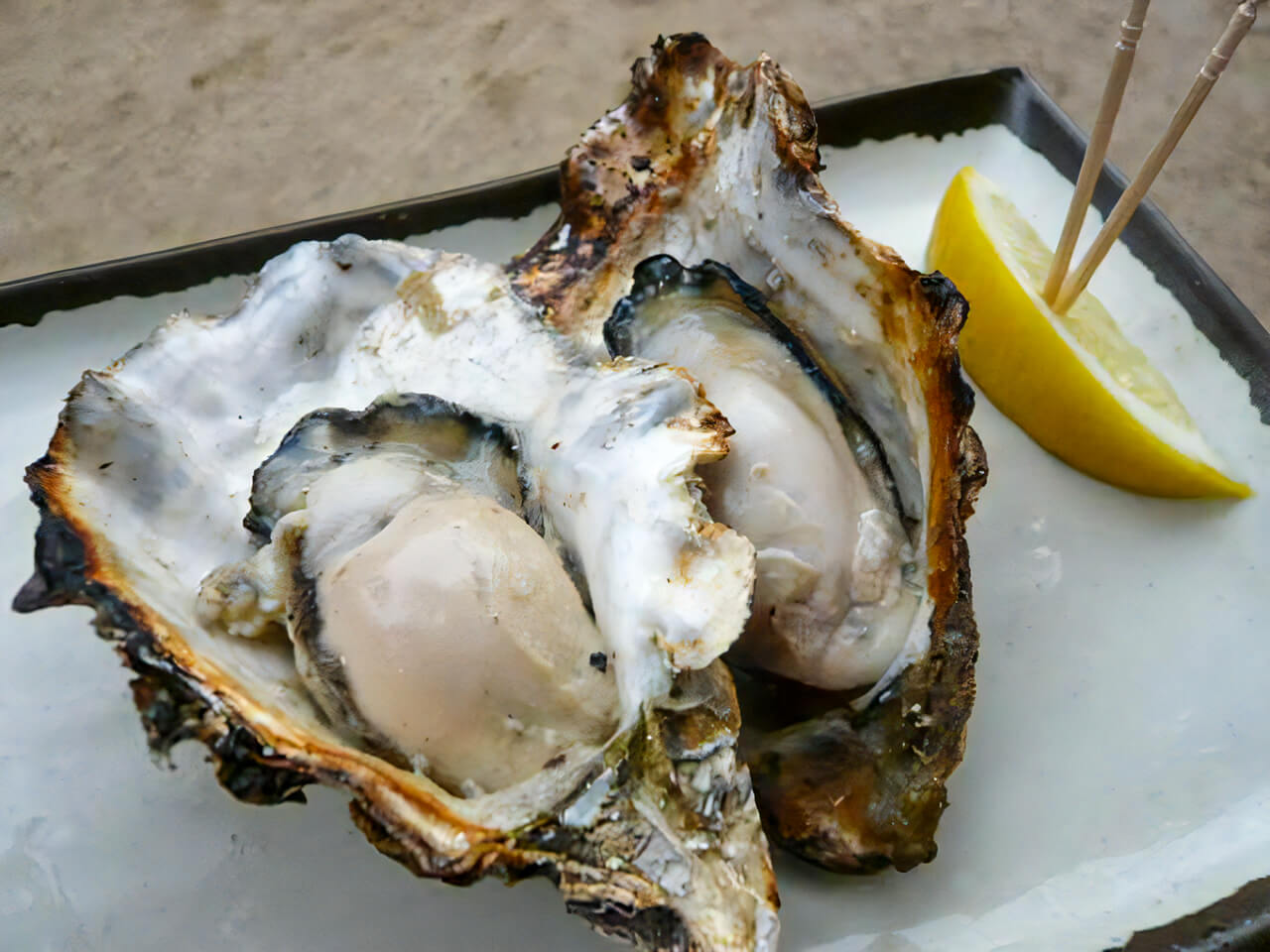
Just keep in-mind that while there are plenty of eateries open during the day, most close relatively early with few staying open until late into the evening. So make sure to check ahead and plan where you’ll eat-out or include dinner in your accommodation package. For more information including accommodation listings, see ‘Best Areas to Stay When Visiting Hiroshima’ below.
11 / DAISHO-IN / all year round

Located at the base of Mount Misen on Miyajima, Daisho-in is an important and picturesque Buddhist temple complex established in the 12th century. It is comprised of multiple buildings including the ‘Kannon-do’ and ‘Maniden’ halls along with other structures and statues, while the ‘Daisho-in Course’ hiking trail leads from the temple to the summit of Mount Misen, the highest point on the island – see below for details. The temple is only a 5 minute walk from Itsukushima Shrine and is open daily from 08:00 until 17:00. Admission is free.
12 / WALK THE TRAILS OF MIYAJIMA / all year round
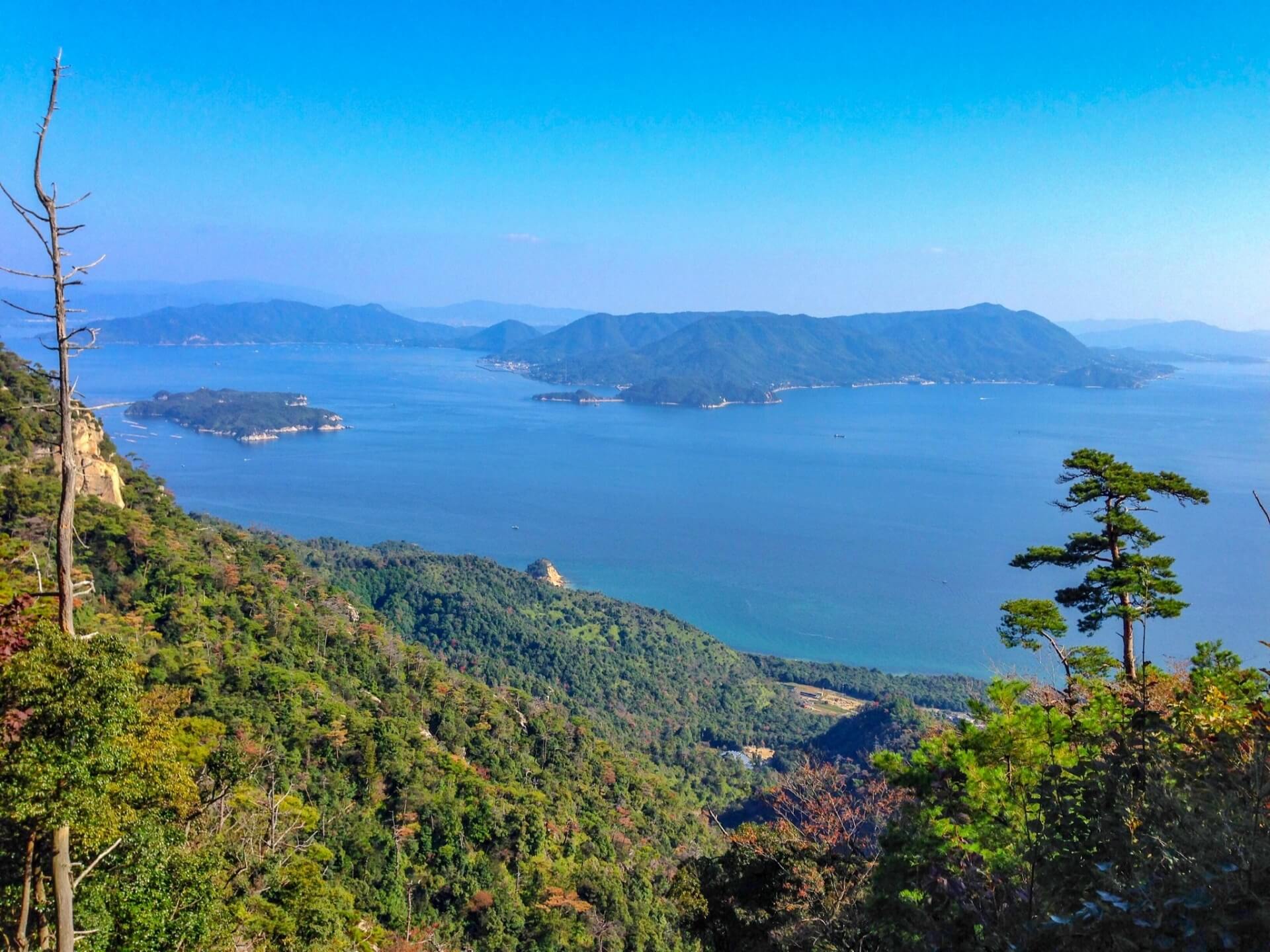
Miyajima is a small island that can be easily explored on-foot thanks to multiple walking and hiking trails. Leisurely paths often run along the seaside or take you inland and through forests, while three more intensive trails – the ‘Daisho-in’, ‘Momijidani’, and ‘Omoto’ Courses – lead to the summit of Mount Misen. The ‘Daisho-in’ Course is the easiest and offers the best views, while the ‘Momijidani’ Course is shorter but steeper and doesn’t offer as rewarding views. Whichever course you choose, expect a 1.5 to 2 hour walk to the summit.
13 / MIYAJIMA ROPEWAY / all year round
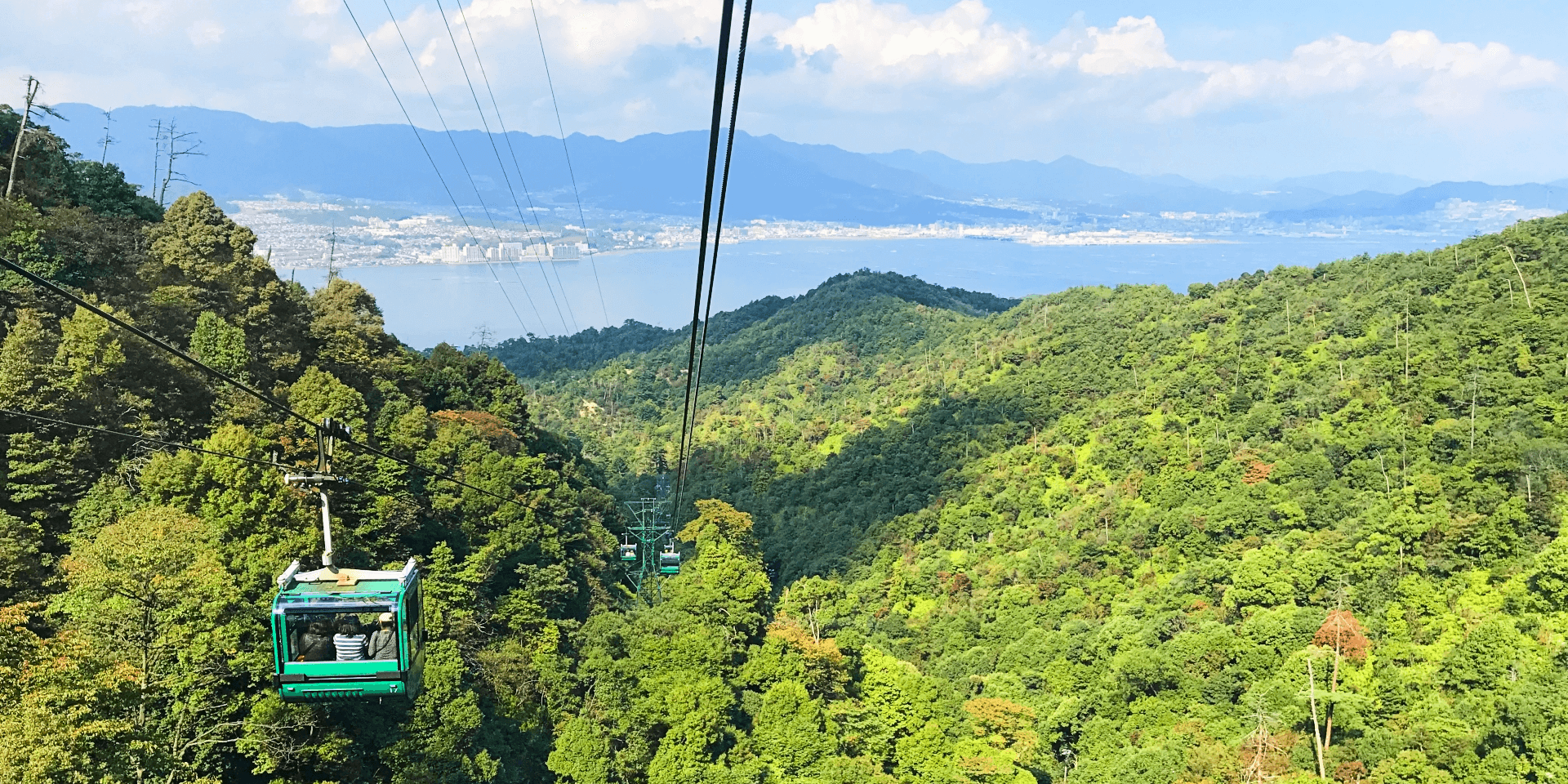
Don’t fancy walking to the summit of Mount Misen? You can still enjoy the view from the island’s highest point by riding the Miyajima Ropeway. Operating all year round from 09:00 to 17:00, the ropeway base station is around 20 minutes walk from Itsukushima Shrine. It costs JPY1010 one-way or JPY1840 for a round-trip. From the ropeway’s top station, a 1km trail leads to the summit around which you’ll find a couple of temples to explore.
14 / EXPLORE SETONAIKAI NATIONAL PARK / all year round
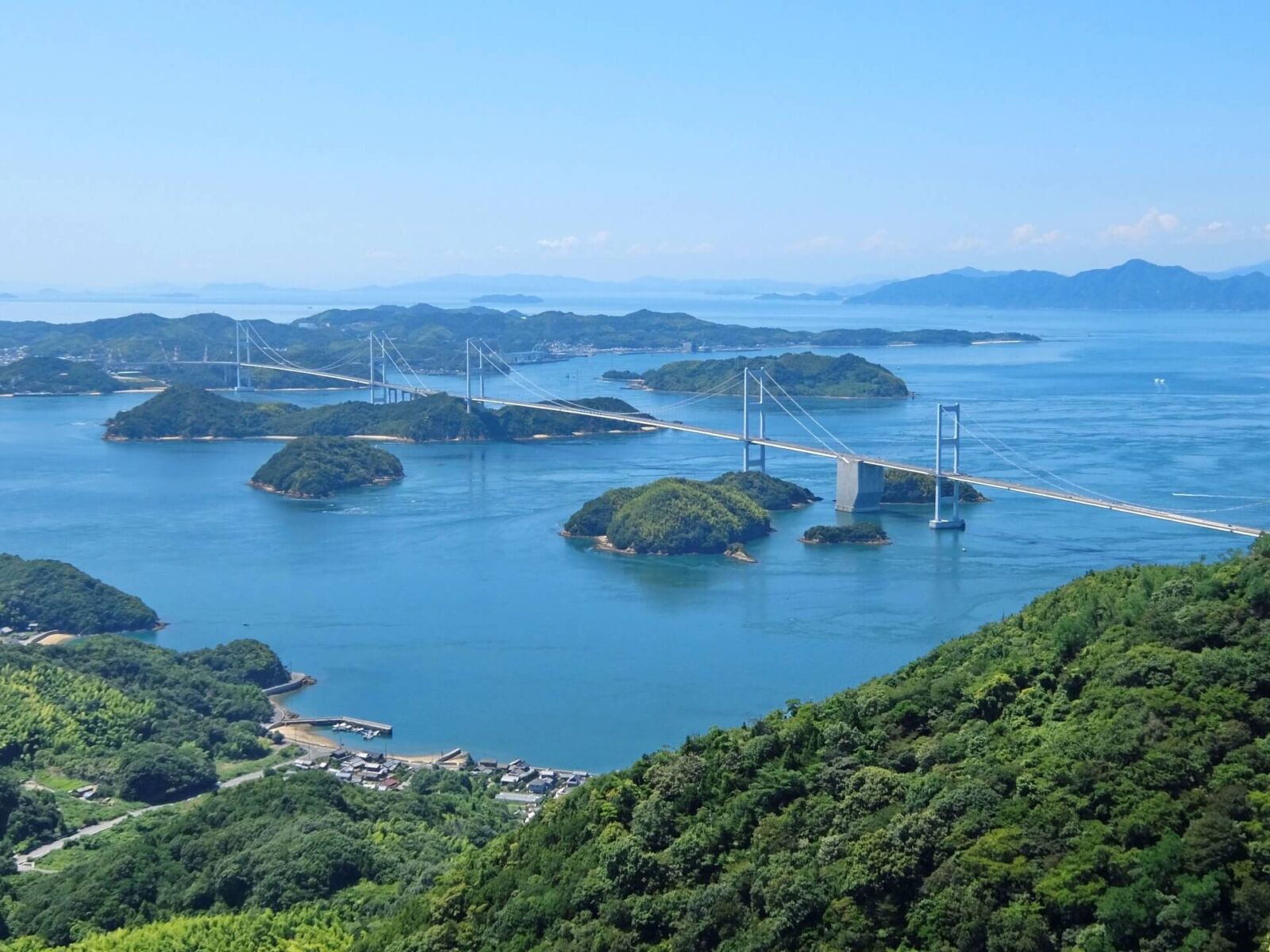
Covering 900,000 hectares across 11 prefectures, Setonokai National Park is the largest national park in Japan. The park includes a vast sea area, numerous islands and coast line from which visitors can enjoy fantastic views. Miyajima lies within the national park and as such, is a gateway into one of Japan’s most rewarding and diverse regions. The park covers much of the Seto Inland Sea, a complex area of open sea and bays connected by narrow straits and islands divided into four areas – Awajishima and its surrounding area, Bisan-Seto and its surrounding area, the Geiyo Islands and their surrounding area, and Suonada and its surrounding area. The region is famous for its clustered archipelagos of islands and islets dotted throughout the calm sea which for generations has supported a rich cultural landscape and maritime industries. The national park is home to a huge range of biodiversity including finless porpoise and other sealife. Where to start and how to get there depends on your places of interest within this huge area, but trust us when we recommend that you go a bit slower and take your time to explore the region.
15 / HEAD ONTO SHIKOKU / all year round

Our final recommendation for visitors heading to Hiroshima, especially those exploring the Setonaikai National Park, is to headed onto Shikoku. The smallest of Japan’s four main islands, Shikoku is also the least visited – by international visitors – region of the country for. Those who do make the journey discover an island blessed with outstanding natural landscapes including the islands and coastline of the Setonaikai National Park, surfing, great fishing and seafood, secluded river valleys and lost villages, and of course the ‘Shikoku Henro’ or ’88 Temple Pilgrimage’ trial that draws visitors from all over the world. For more information about just what’s on offer, see our ’25 Things to Do Around Shikoku & Where to Stay’ page.
BEST AREAS TO STAY WHEN VISITING HIROSHIMA
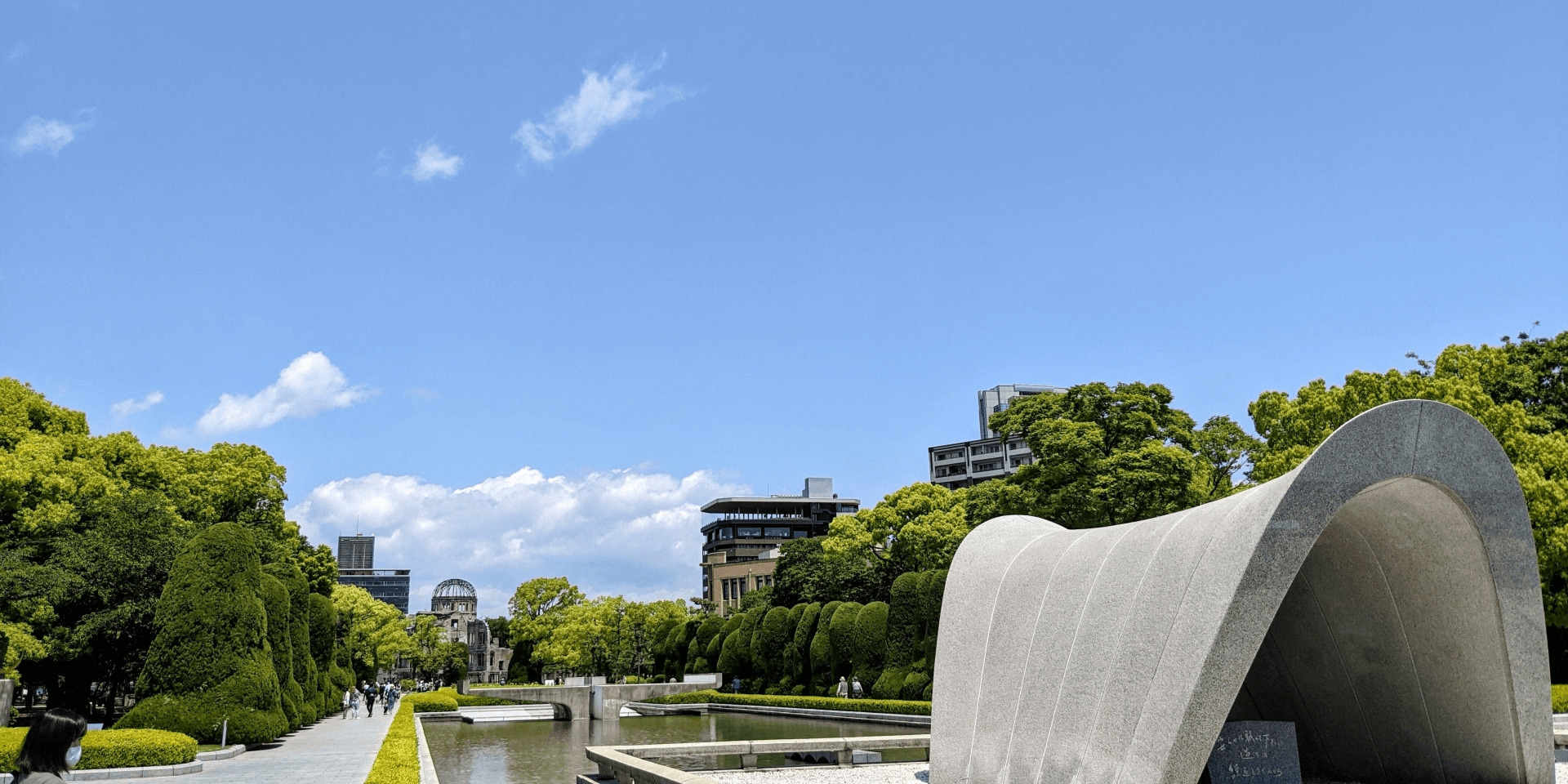
Hiroshima is a reasonably large city – to be precise, it’s the eleventh largest city in Hiroshima – with its most popular attractions spread-out over a reasonable distance. While the city isn’t big enough that the location of your accommodation can hugely affect your visit, as it can in Osaka or Tokyo, there are areas of the city that are more convenient than others starting with:
HIROSHIMA STATION AREA

Most international visitors will travel to and from the city via Hiroshima Station, making it a logical area in which to stay. As a stop on the San’yo Shinkansen line and with tram and bus lines starting from it, the station is the easiest to move around Hiroshima. In its immediate vicinity, you’ll find a large range of accommodation including mid-size and large Western-style hotels. The majority of the city’s most popular attractions are accessible from the southern side of the station with hotels on both sides with the Sheraton Grand being a notable high-end option on the north side of the station. For more information including accommodation listings, see our ‘Hiroshima Station Area’ hotel page.
CENTRAL / HATCHOBORI STATION AREA
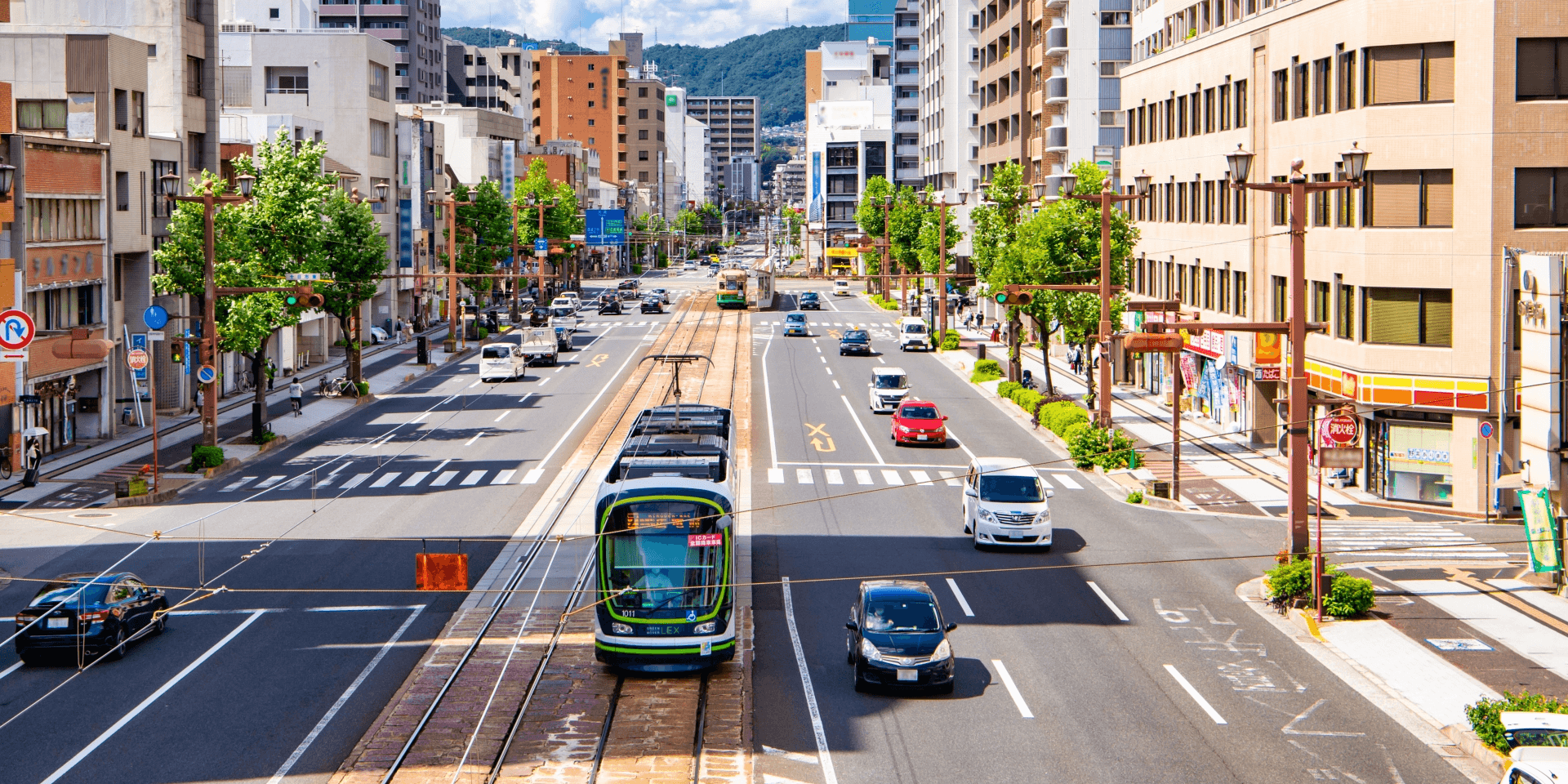
Crossing the Kyobashi River from the station, you move into the central city area, where you’ll find another concentration of accommodation. There’s plenty of hotels to choose from, most of which are mid-range to budget hotels, including mid-size business hotels. Prices are typically a little cheaper than around the station with many hotels within easy walking distance of both the station and Peace Memorial Park. You can access this area of the city via Ebisucho Staion, Hatchobori Station or Kamiyacho-Higashi Station with the area around Hatchobori considered the main shopping, dining and entertainment precinct of Hiroshima. For more information including accommodation listings, see our ‘Central / Hatchobori Station Area’ hotel page.
PEACE PARK AREA
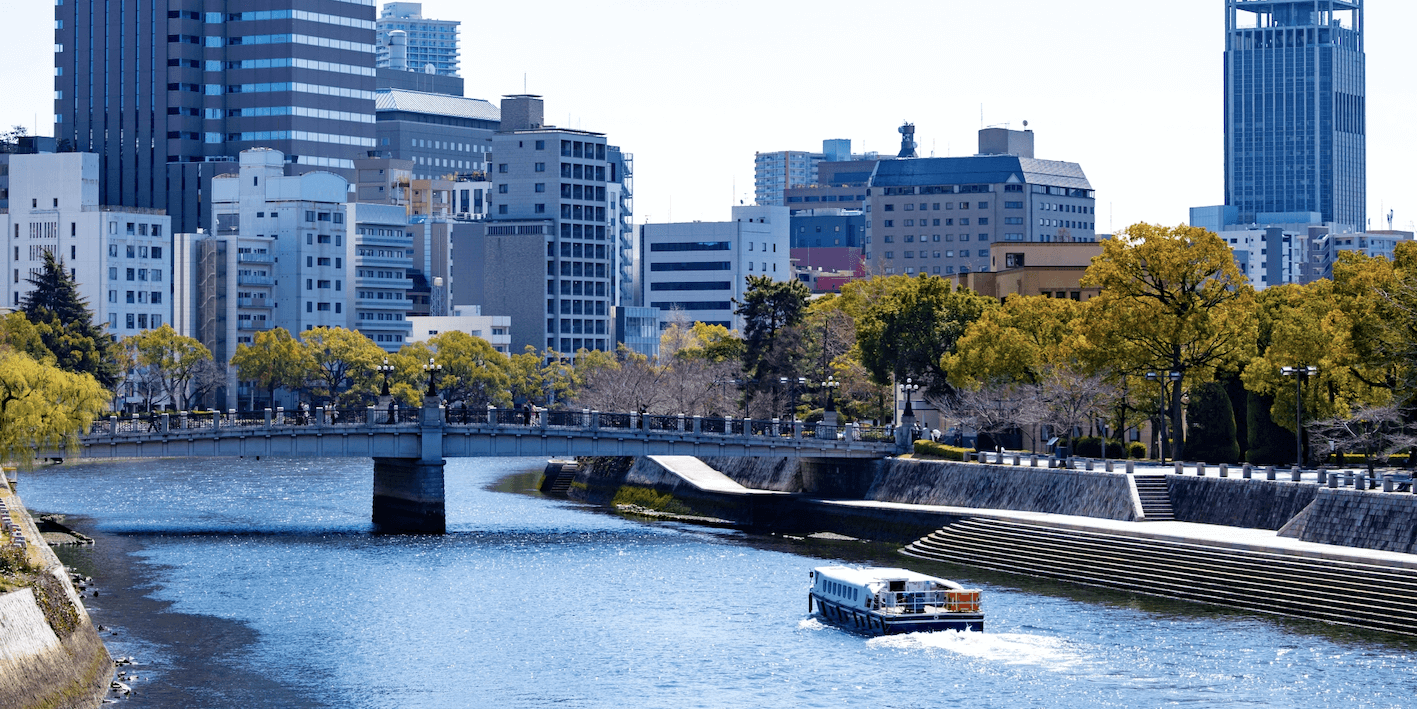
You’ll find more accommodation to the south of the Peace Memorial Park and to the west across the Motoyasu River around Tokaichi-machi Station. Prices in this area are little more expensive than the central city but not as convenient. If you’ll be spending multiple days in and around the Peace Memorial Park, staying in this area can be a good option. But if you’re only in Hiroshima for a night and want to see as much as possible, we recommend staying around the station or central city. For more information including accommodation listings, see our ‘Peace Park / Tokaichi-machi Station Area’ hotel page.
MIYAJIMA AREA
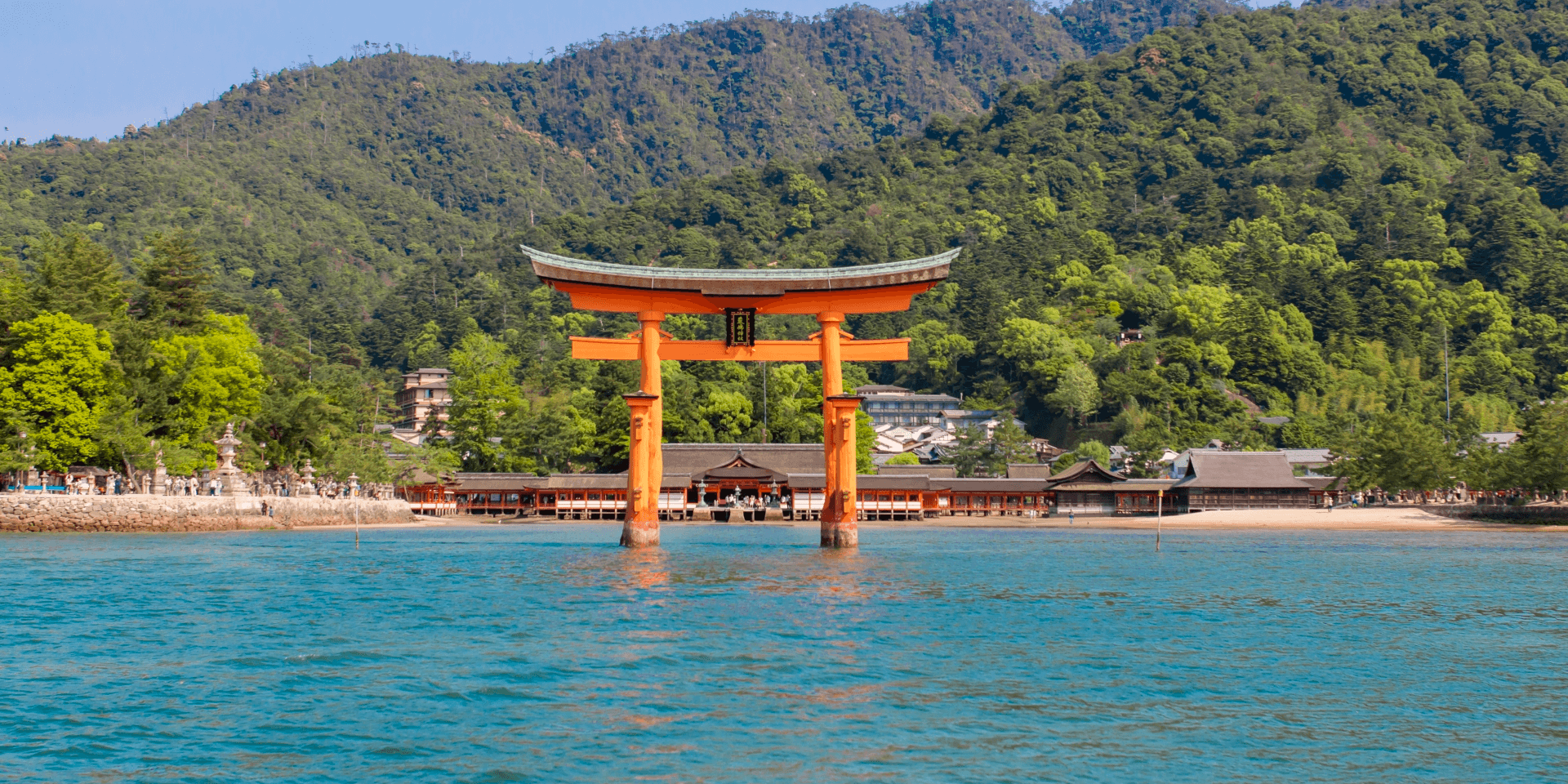
To access the island of Miyajima takes around 60 minutes from Hiroshima Station. Though outside the central city, it’s an extremely popular destination thanks to its famous shrine and seabound ‘torii’ gate, and offers visitors a good alternative to staying in the city. You’ll find a wide range of accommodation on the island, almost all of which is within easy walk of the ferry pier and shrine. Options include mid-size to large hotels, high-end ‘ryokan’ (traditional guesthouses) along with family-run ‘minshuku’ (basic guesthouses) and budget options. Busy during the day, staying on Miyajima is a great way to enjoy it at night and in the morning without the crowds of large tour groups. For more information including accommodation listings, see our ‘Miyajima Area’ hotel page.
HOW TO GET TO HIROSHIMA
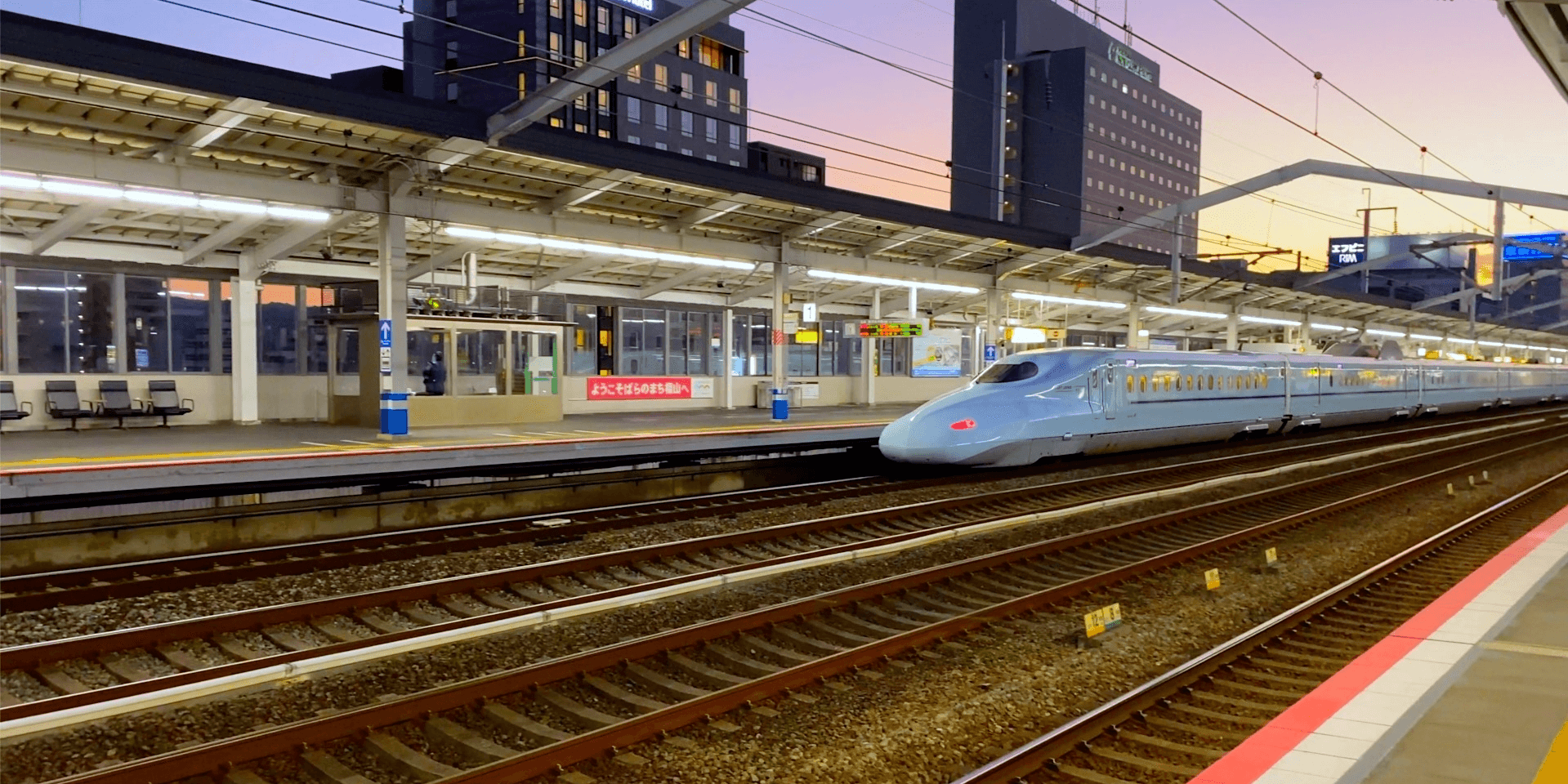
As a stop on the San’yo Shinkansen line, Hiroshima Station is the main access point of the city and wider region. Services run frequently throughout the day and once at Hiroshima Station, local train, bus and tram lines carry you onto the most popular destinations in the city and surrounding. Our ‘How to Get to Hiroshima’ page has just how to get there from popular starting points including Osaka, Kyoto, Tokyo and beyond.
PLAN YOUR VISIT TO JAPAN
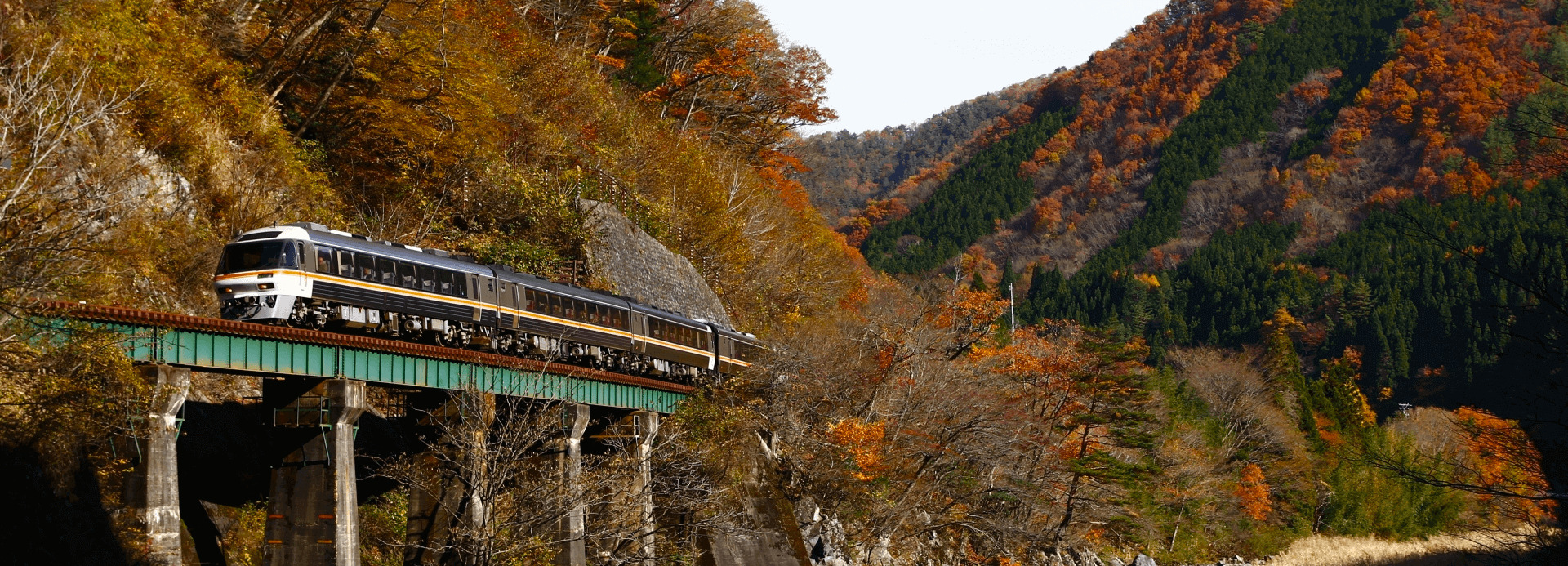

Heading to Hiroshima using the rail system is quick, easy and comfortable. Unfathomable in its size and efficiency, moving around the country by train opens-up all regions of Japan for exploration. Our ‘Plan Your Visit’ page has everything you need to know about visiting Japan – from tips on the best time to travel, times to avoid, entering and exiting the country, money matters, staying connected, accommodation, staying safe and healthy and plenty more to ensure that you get the most out of your time here.



